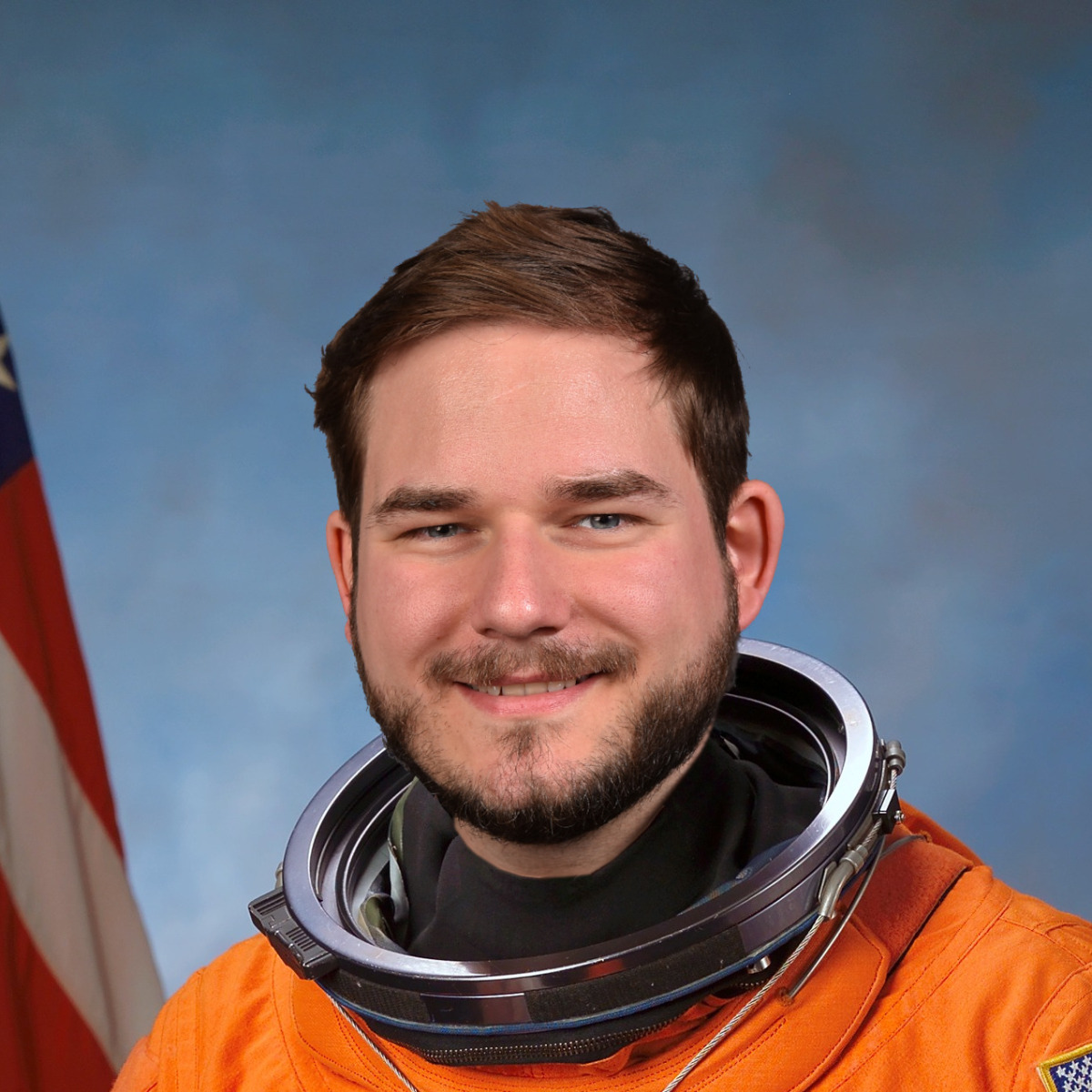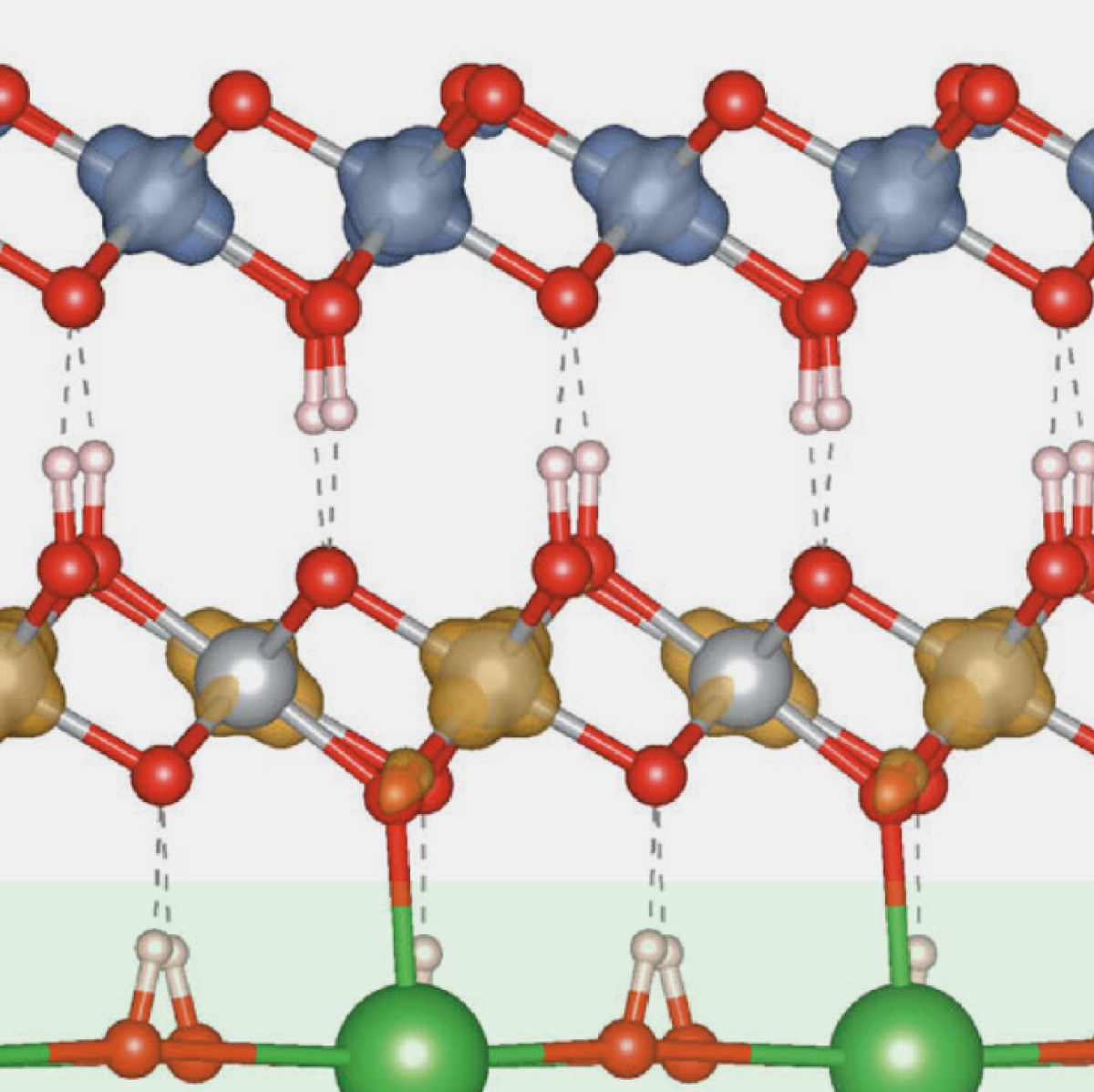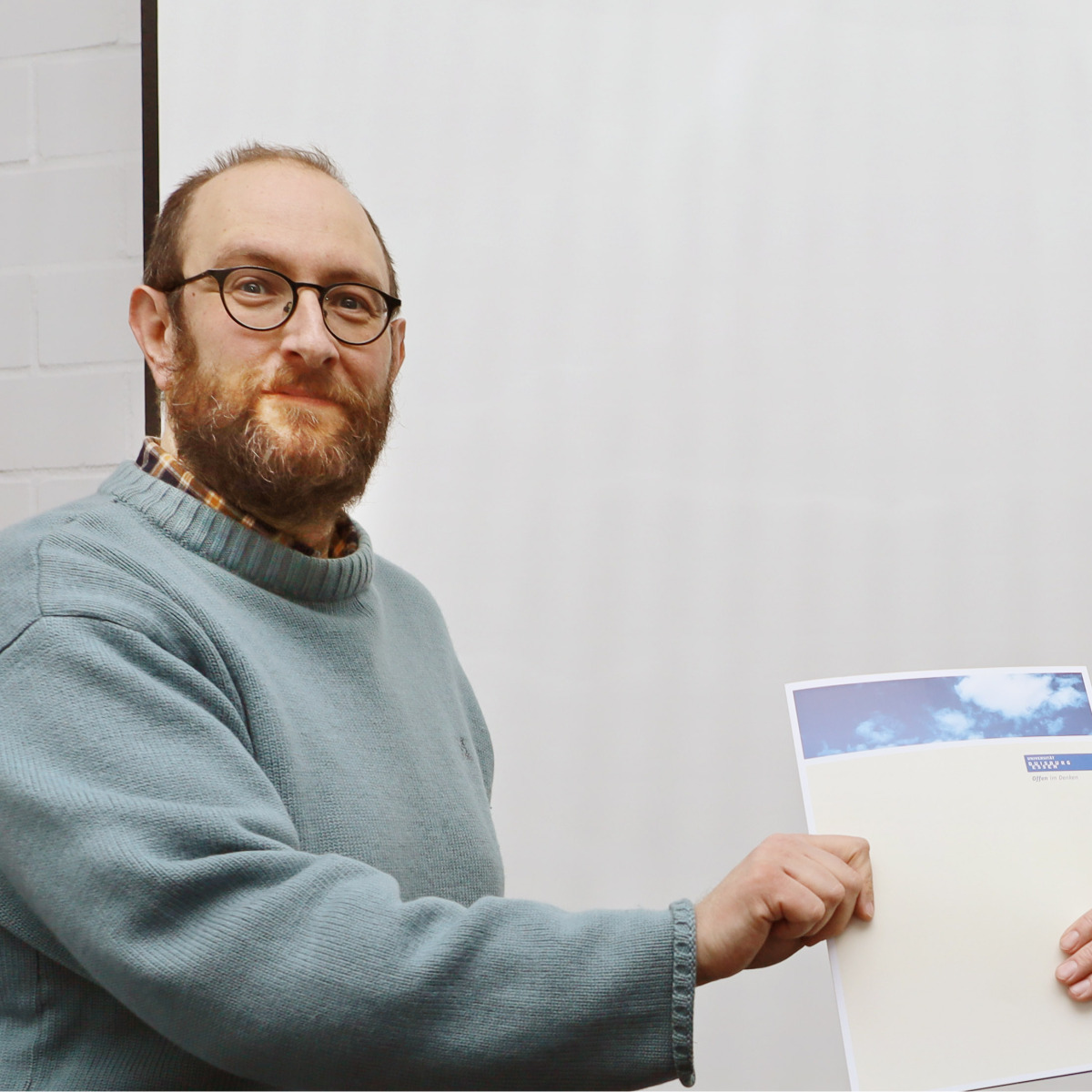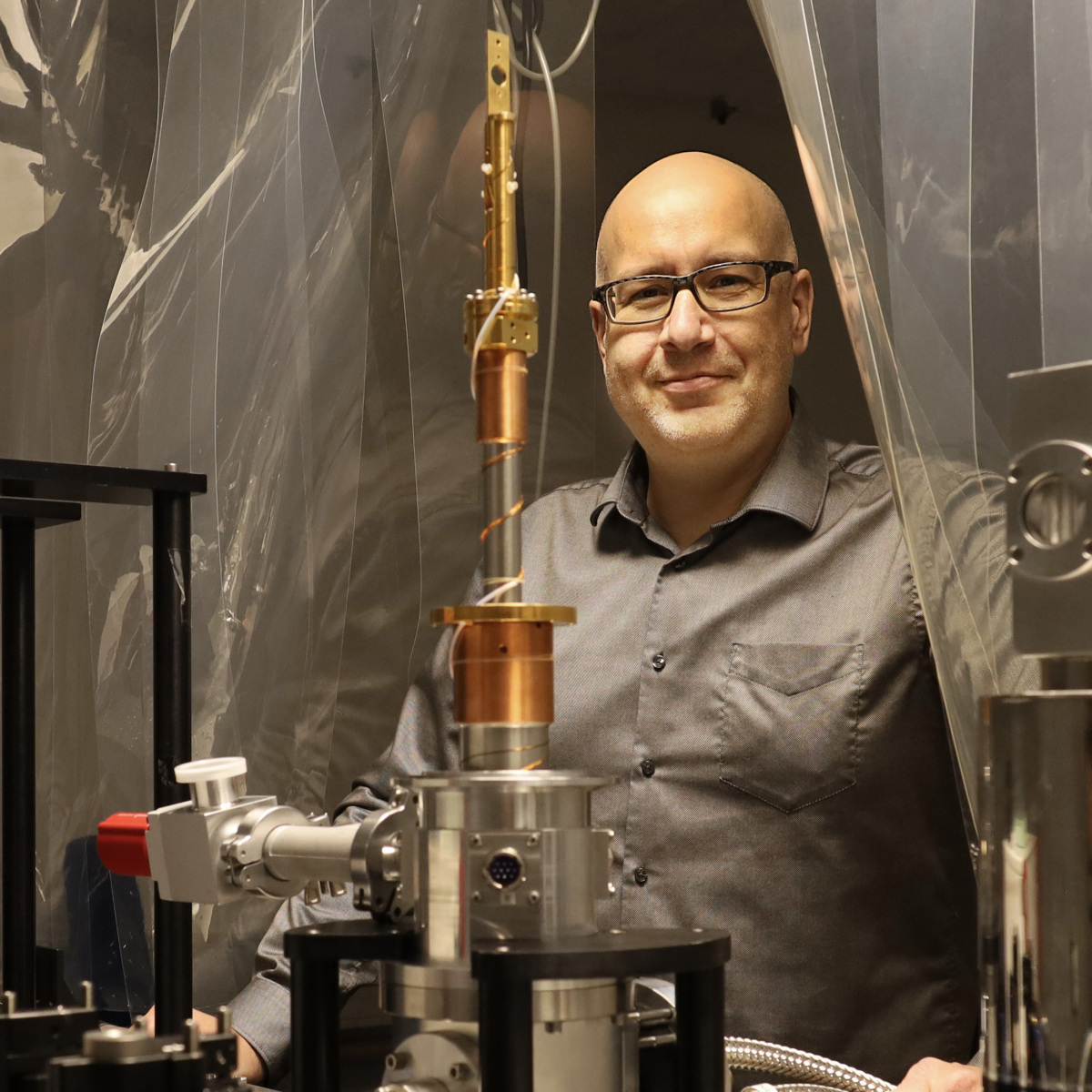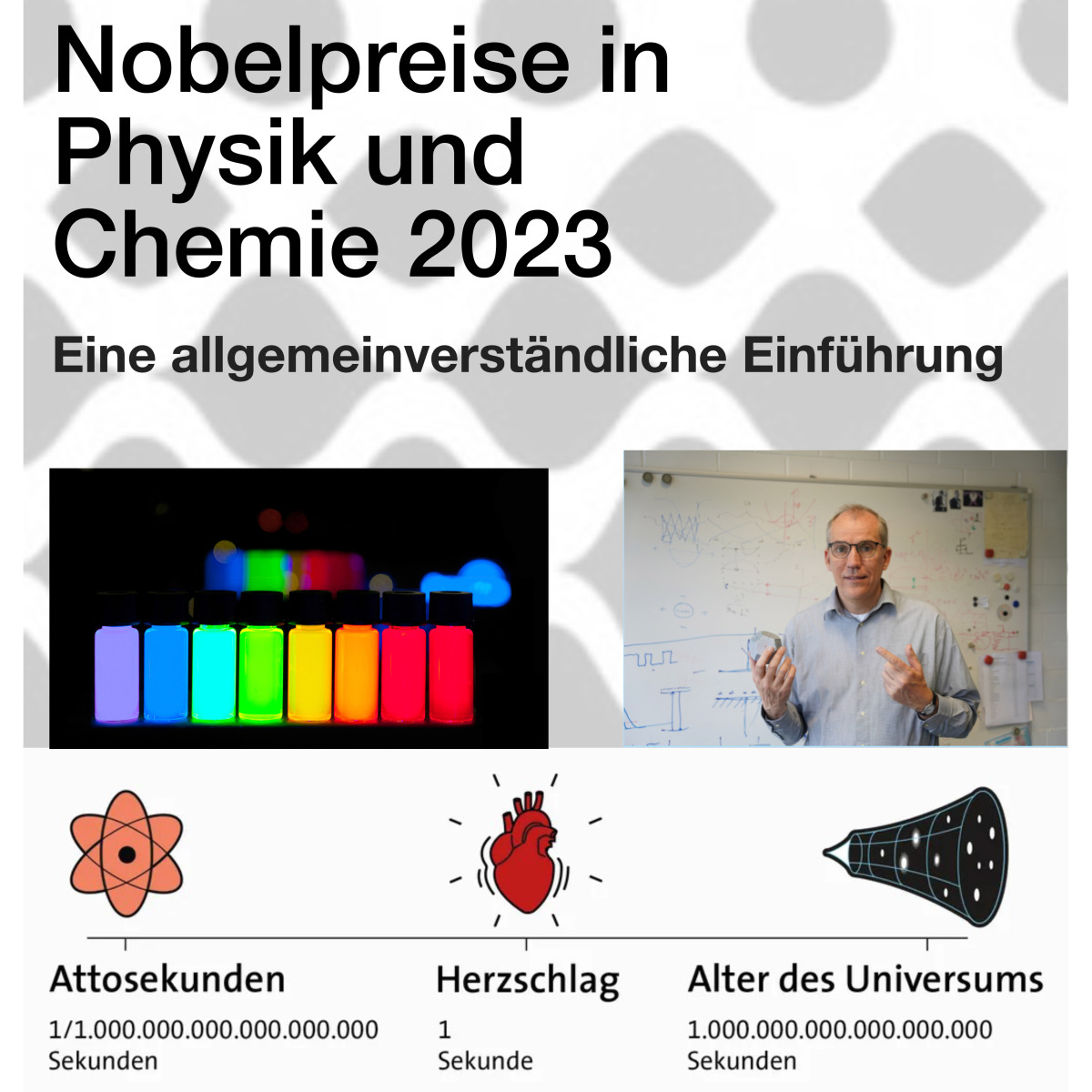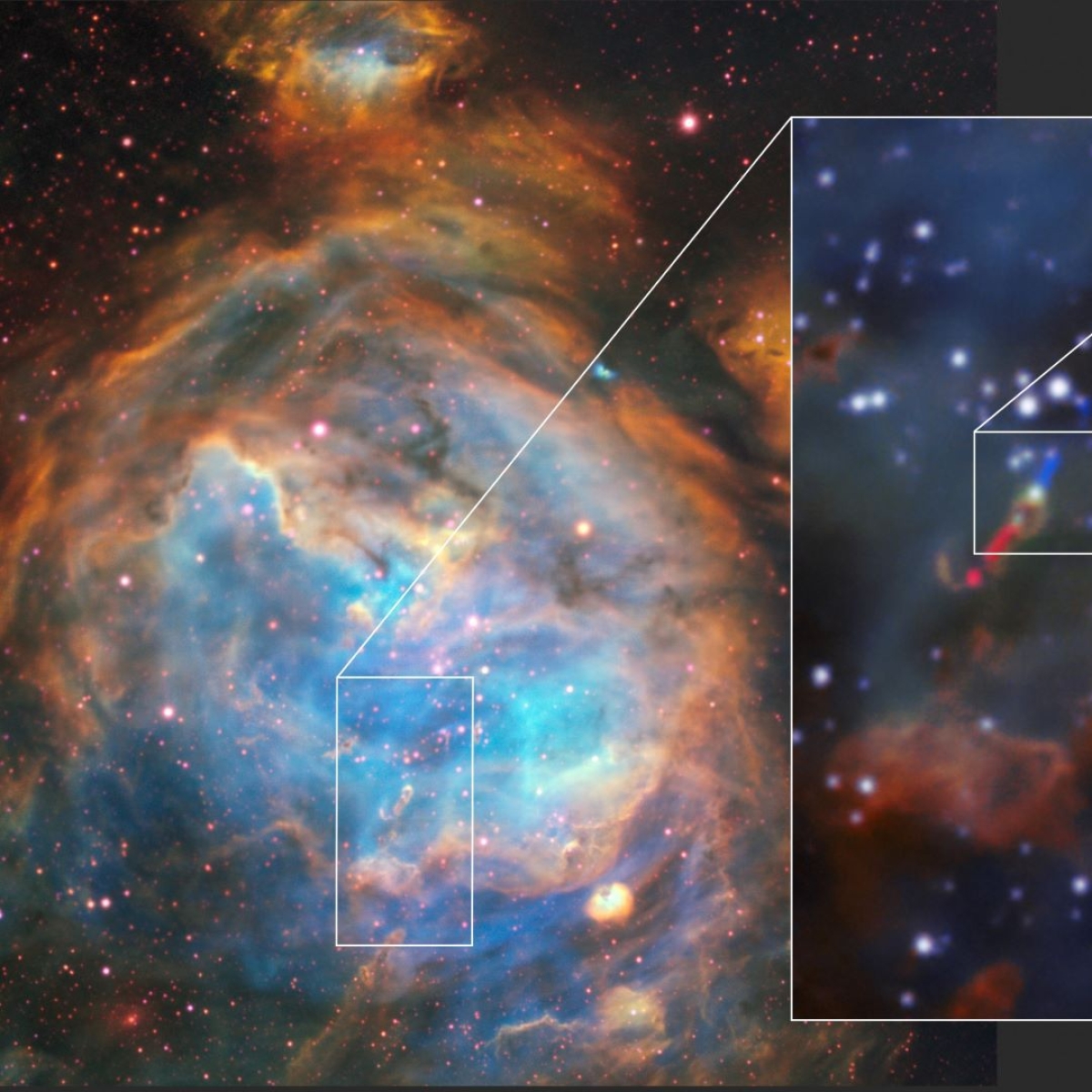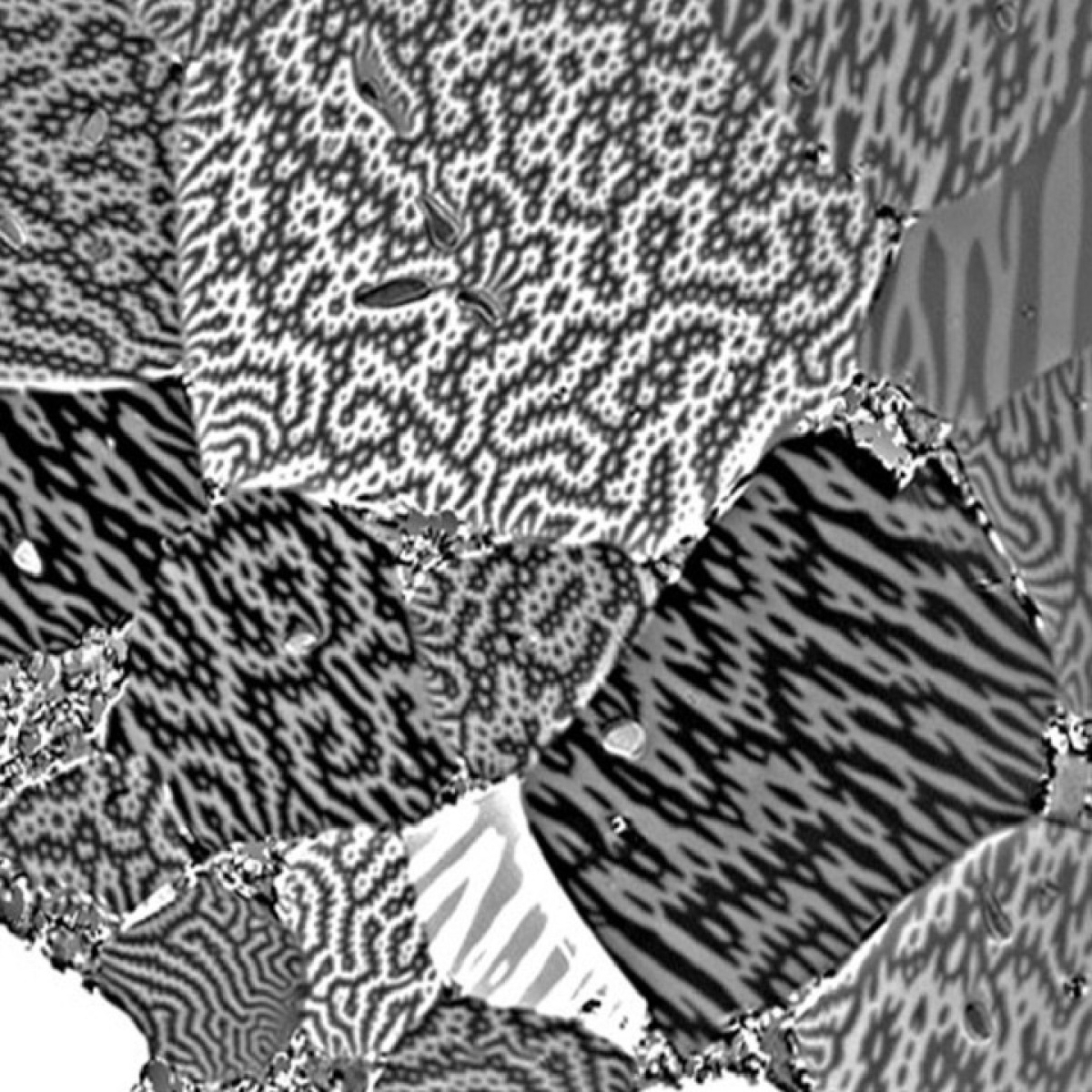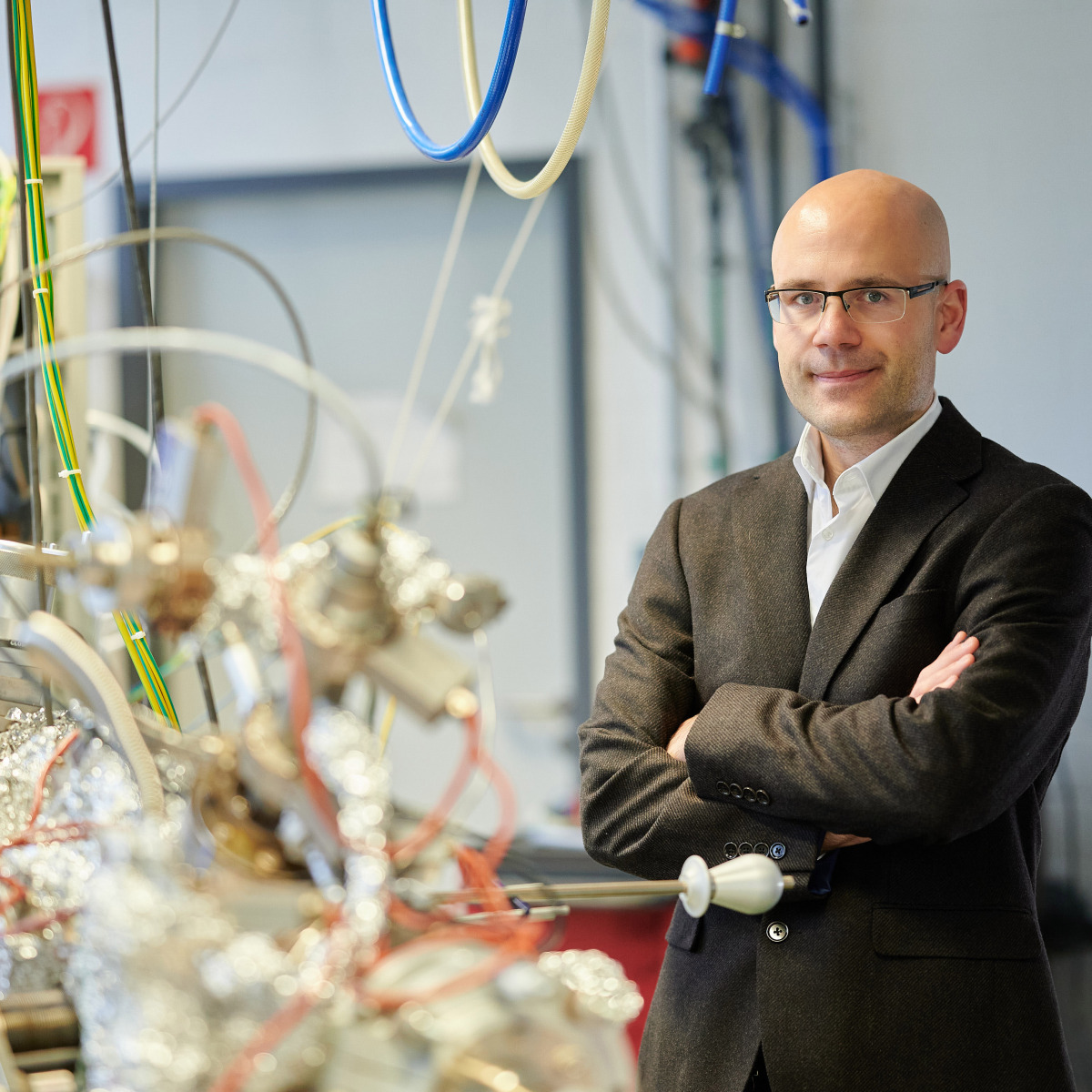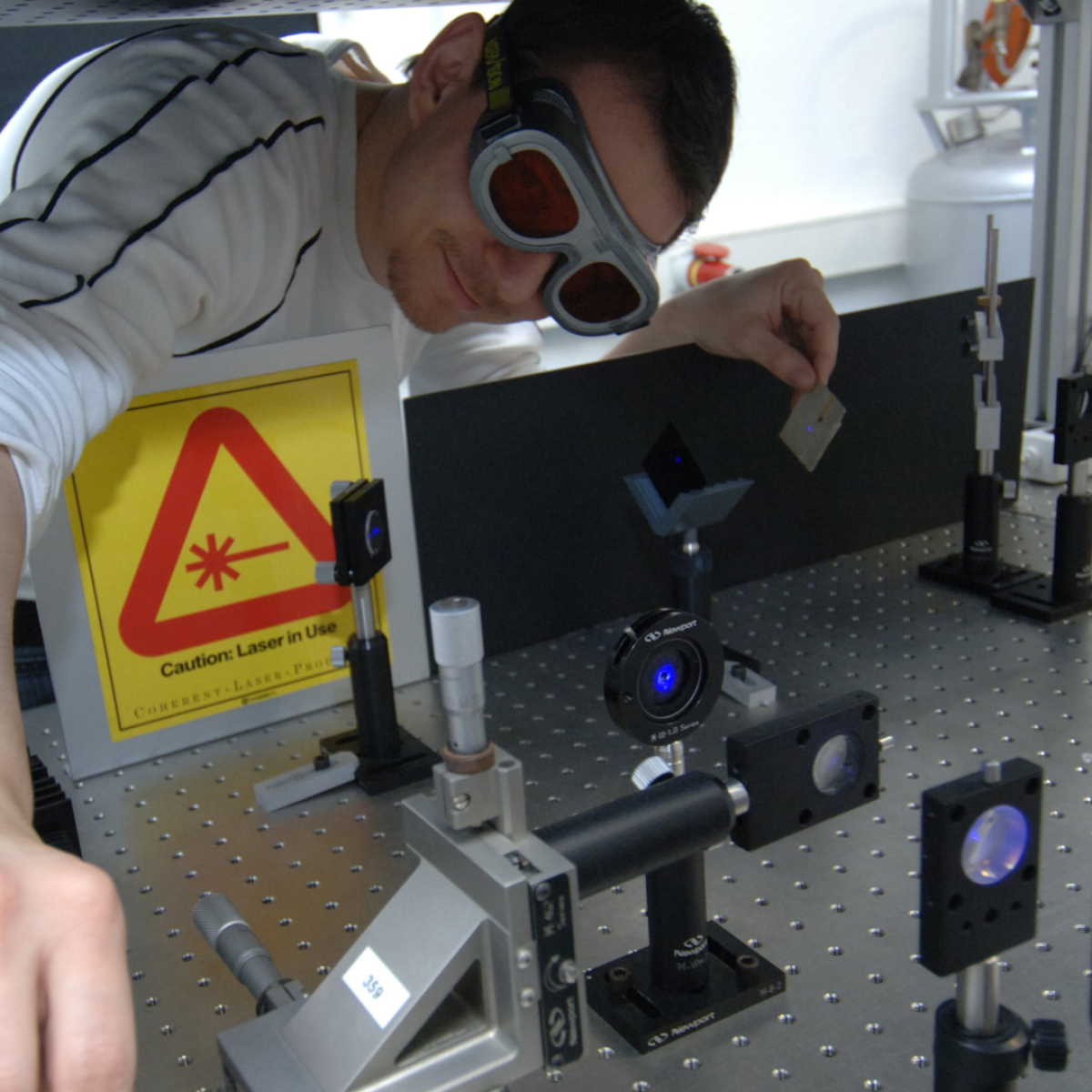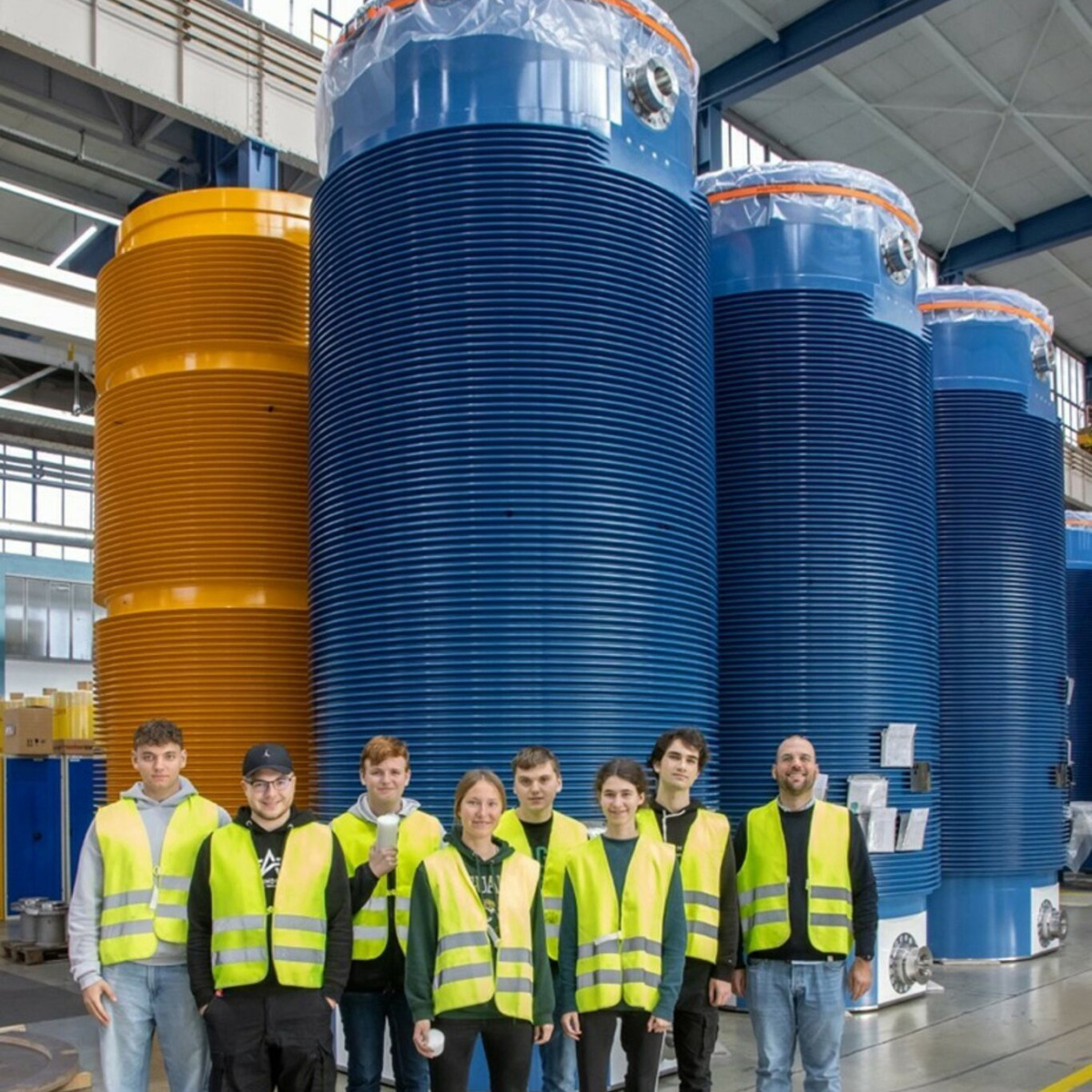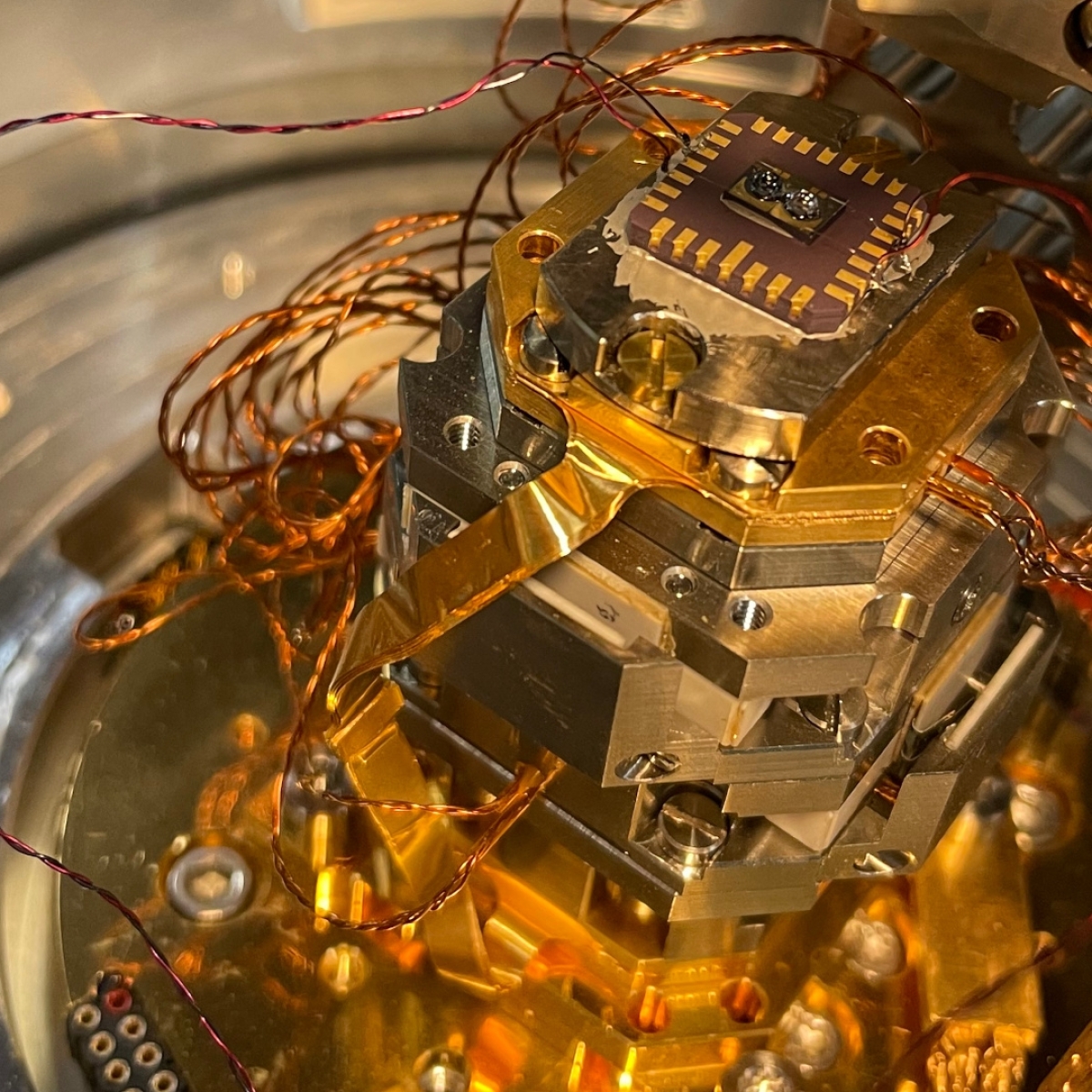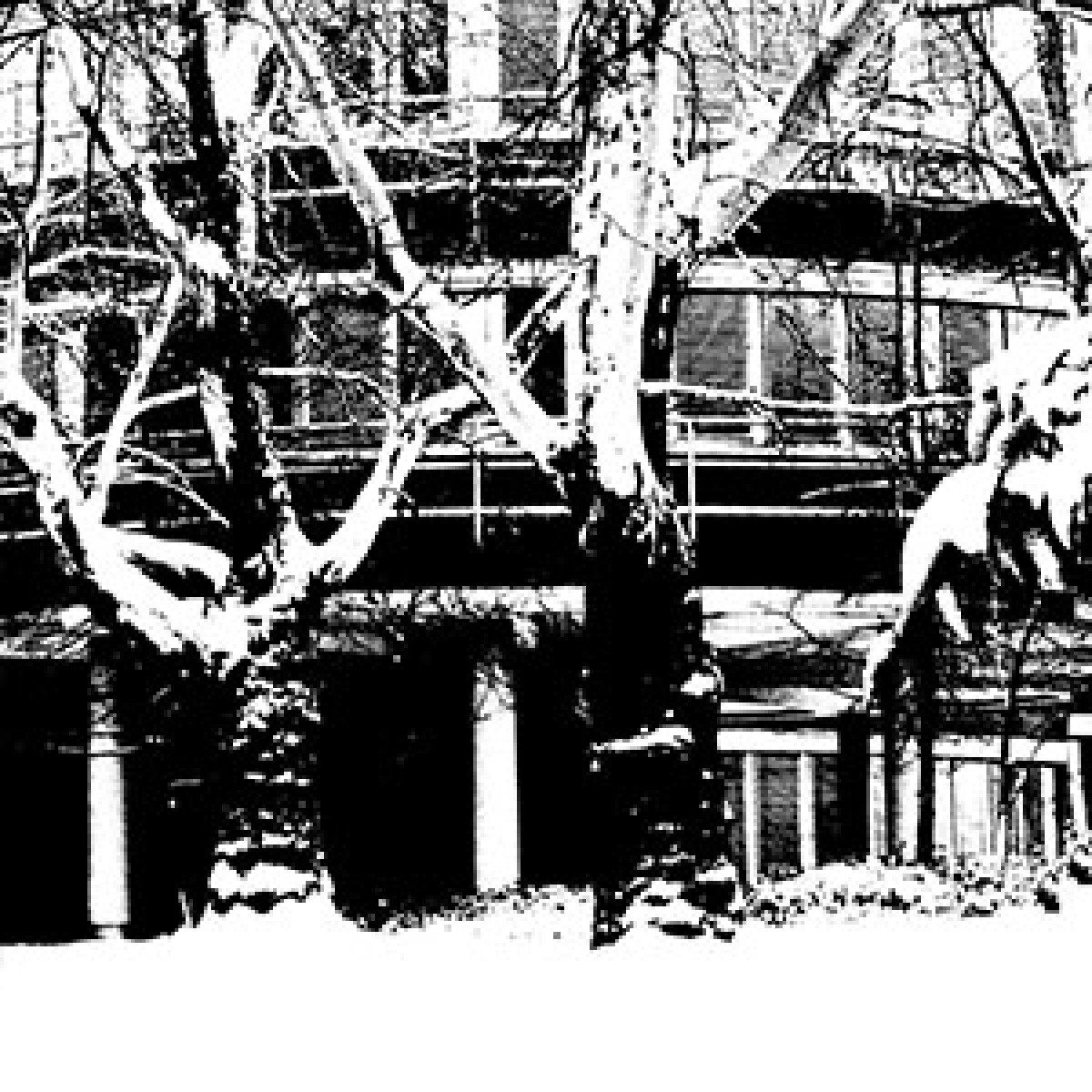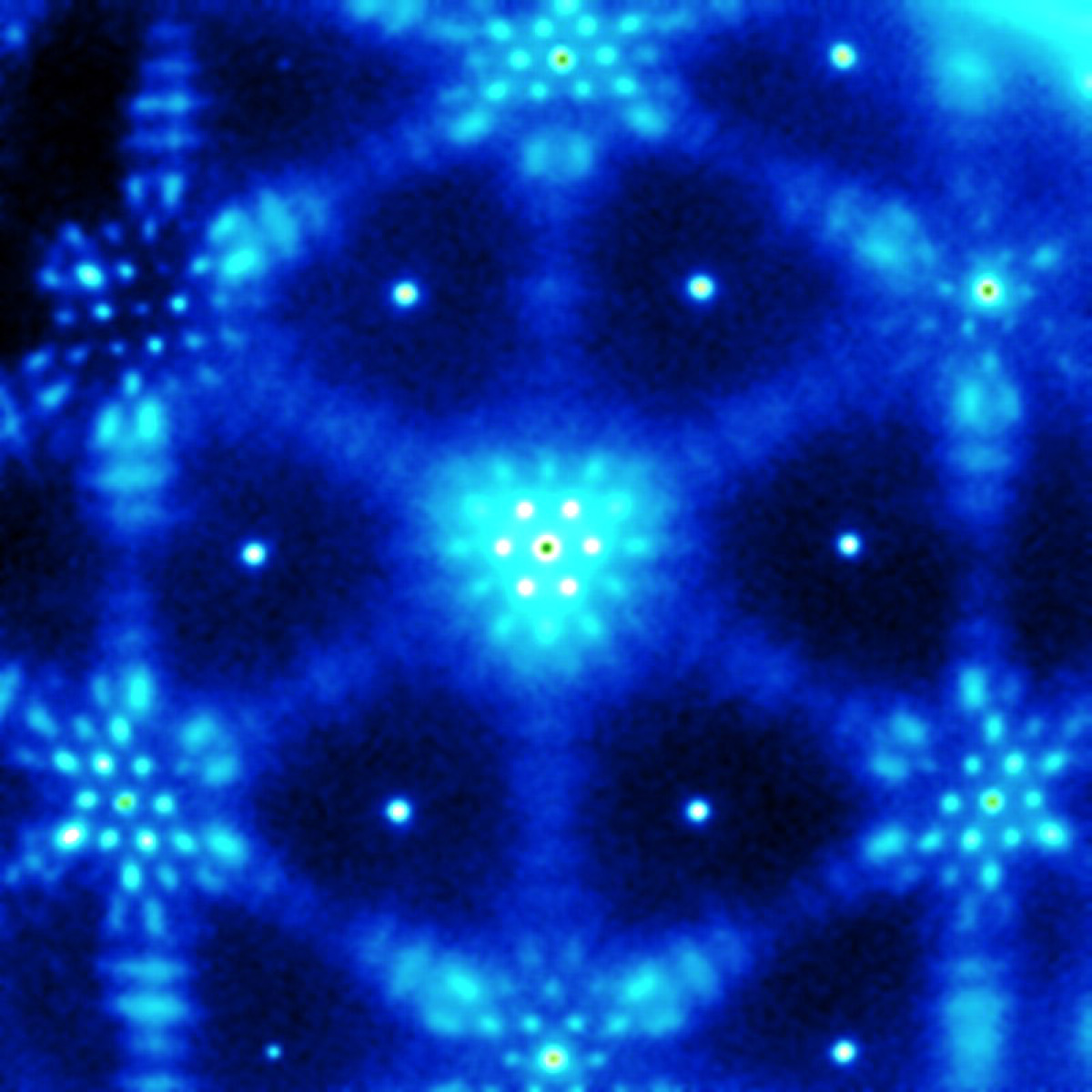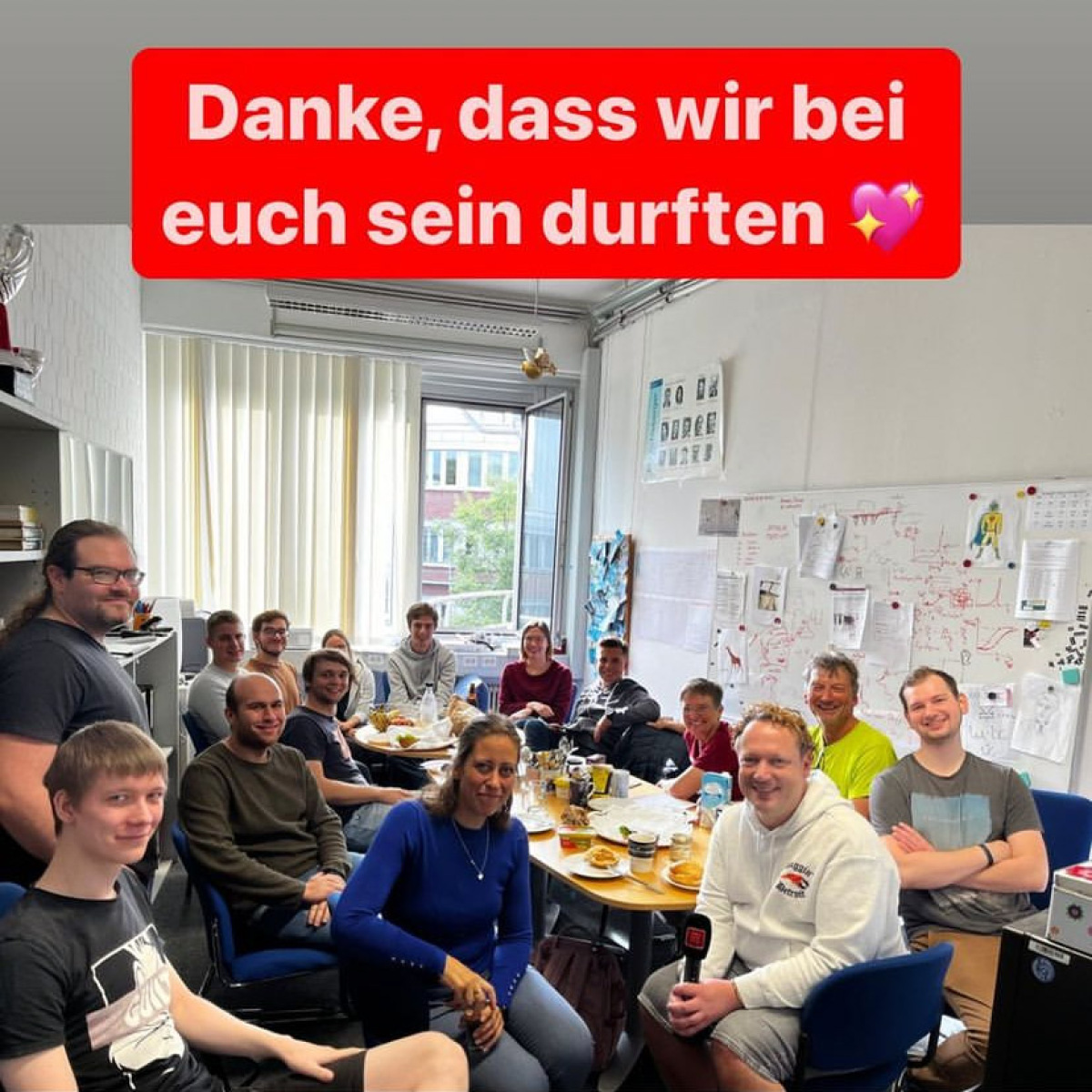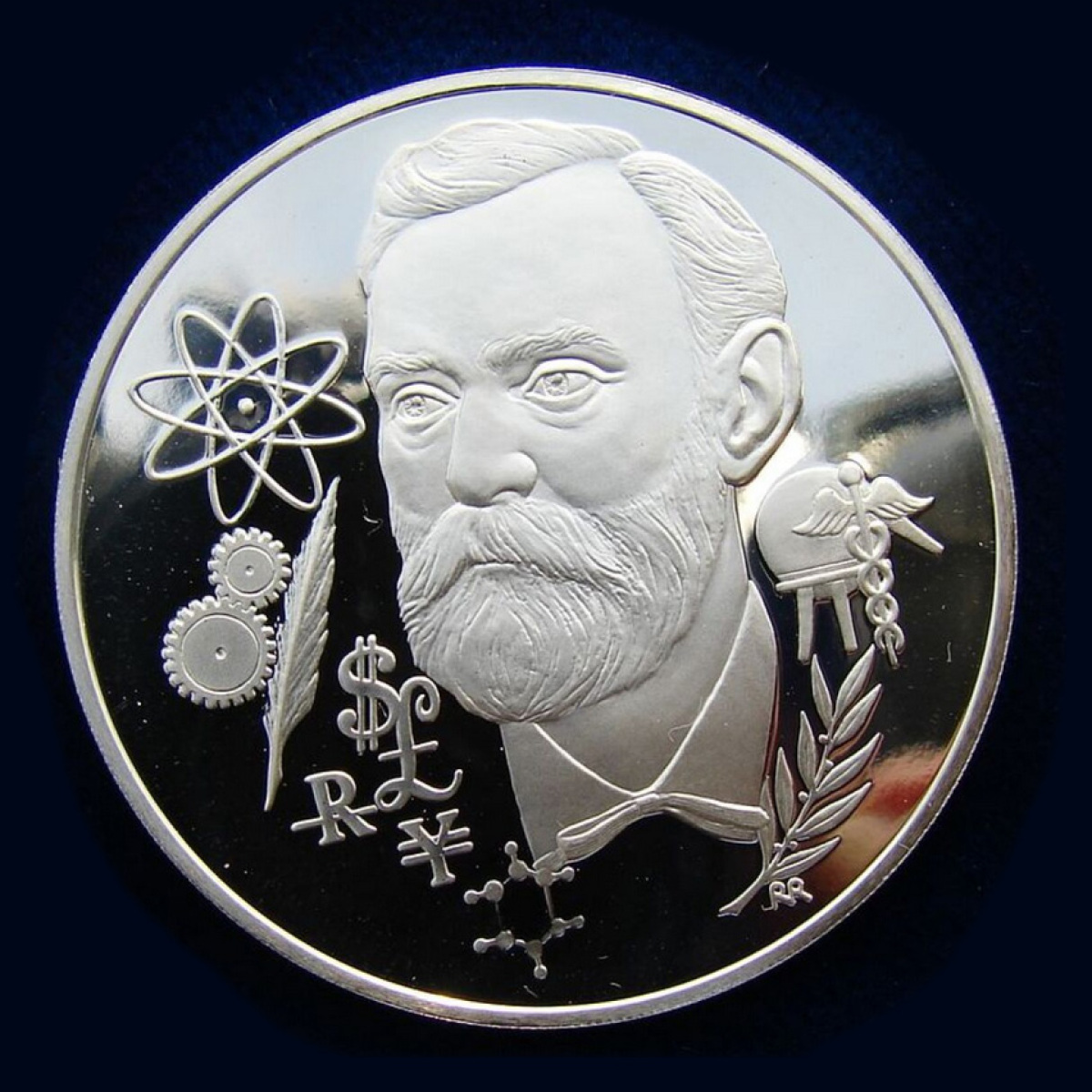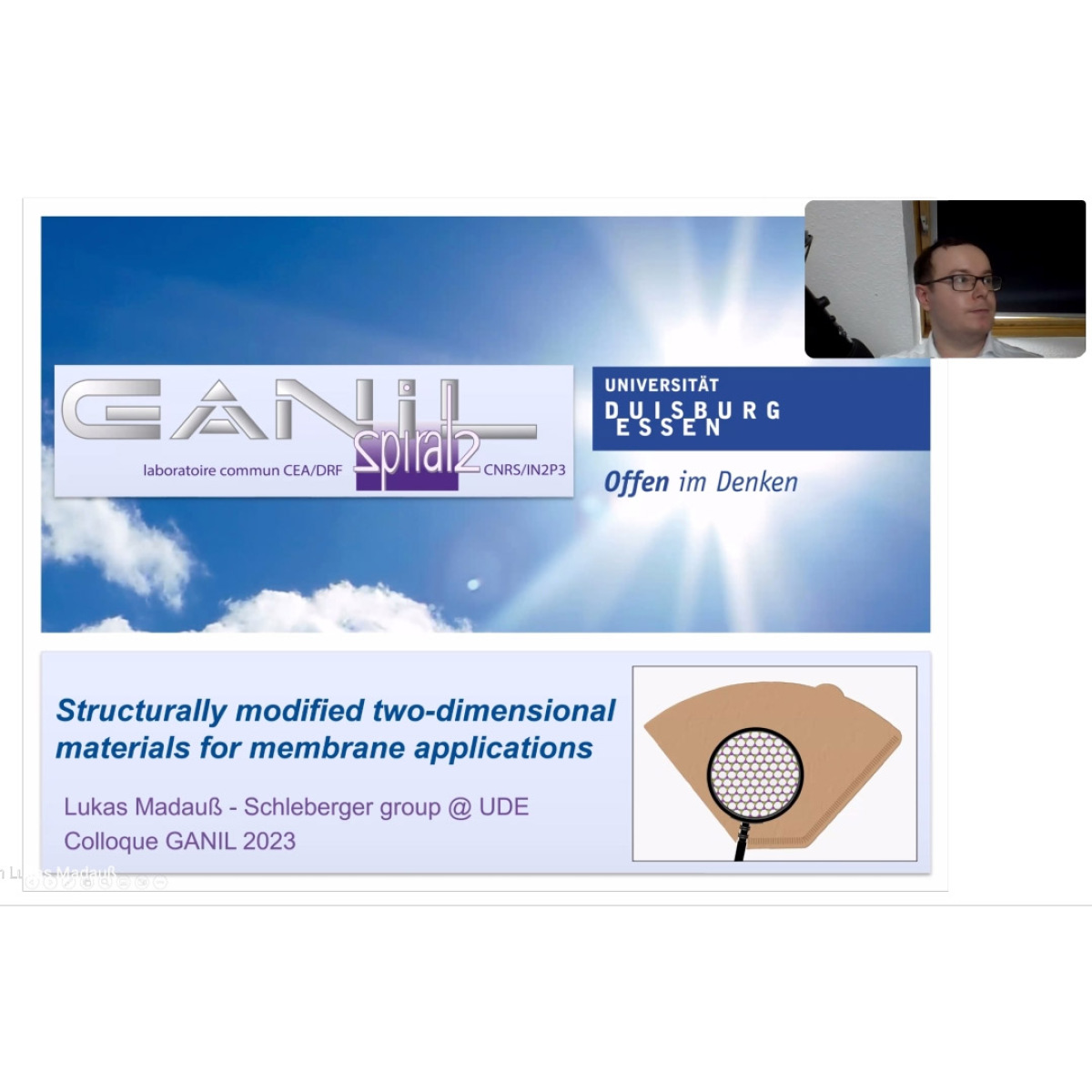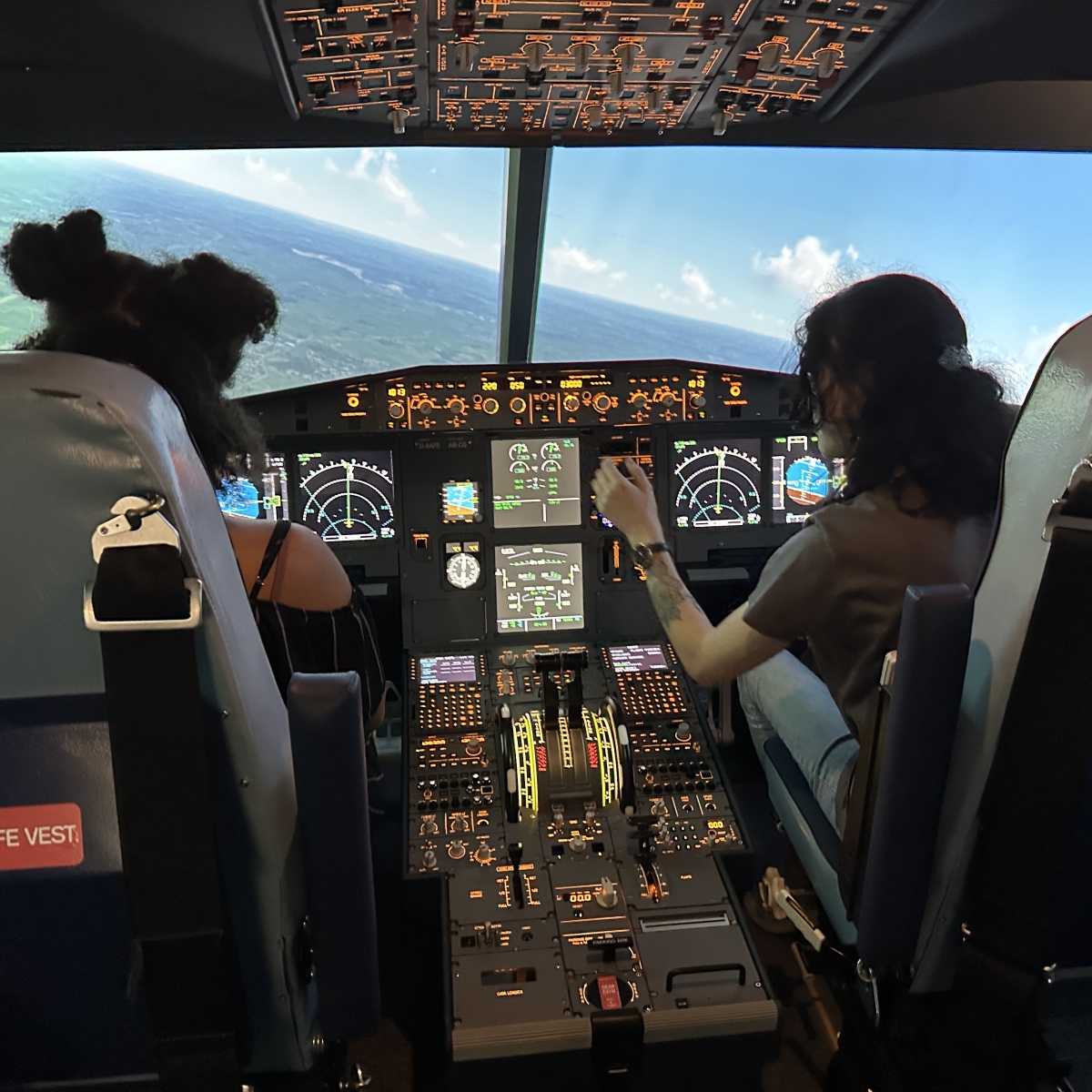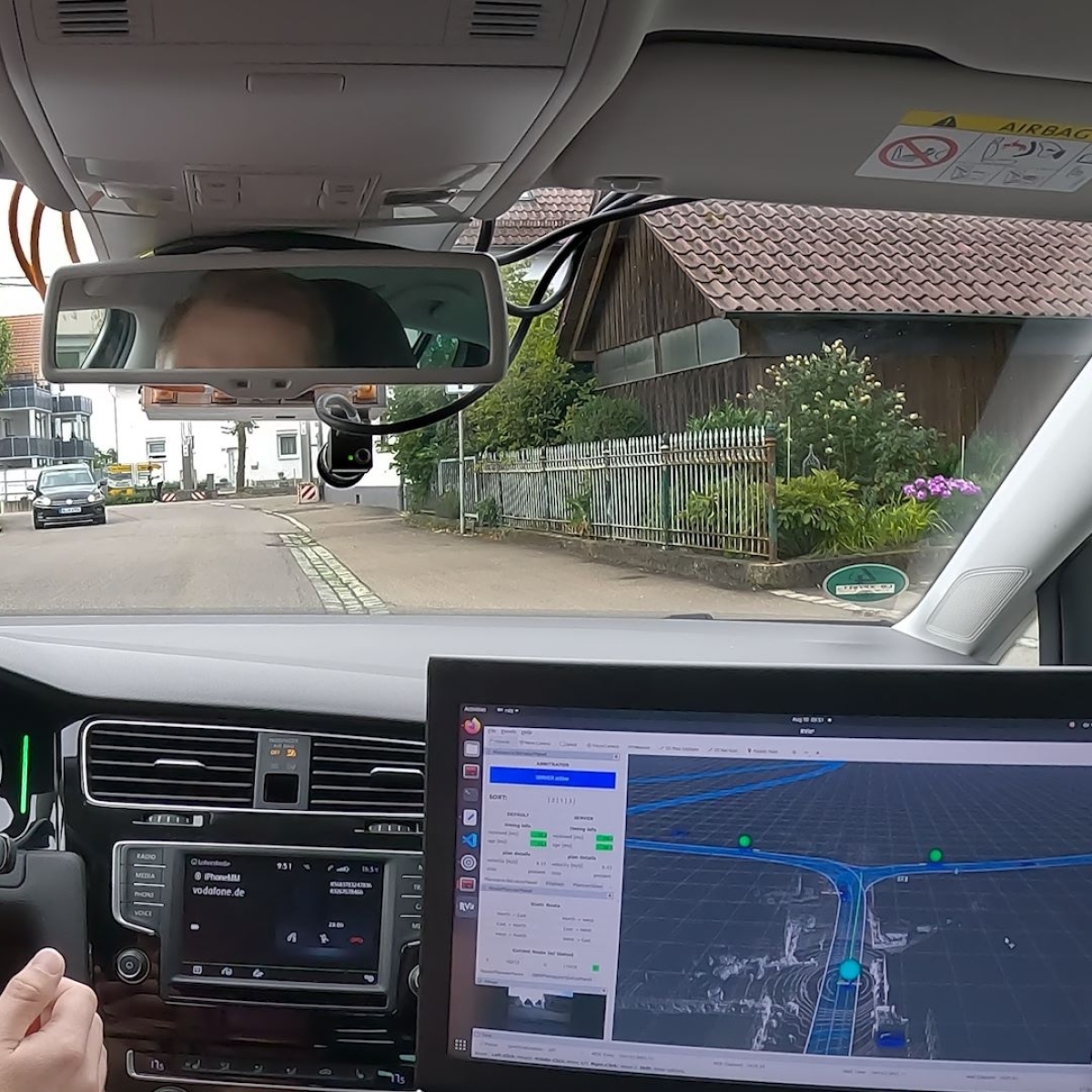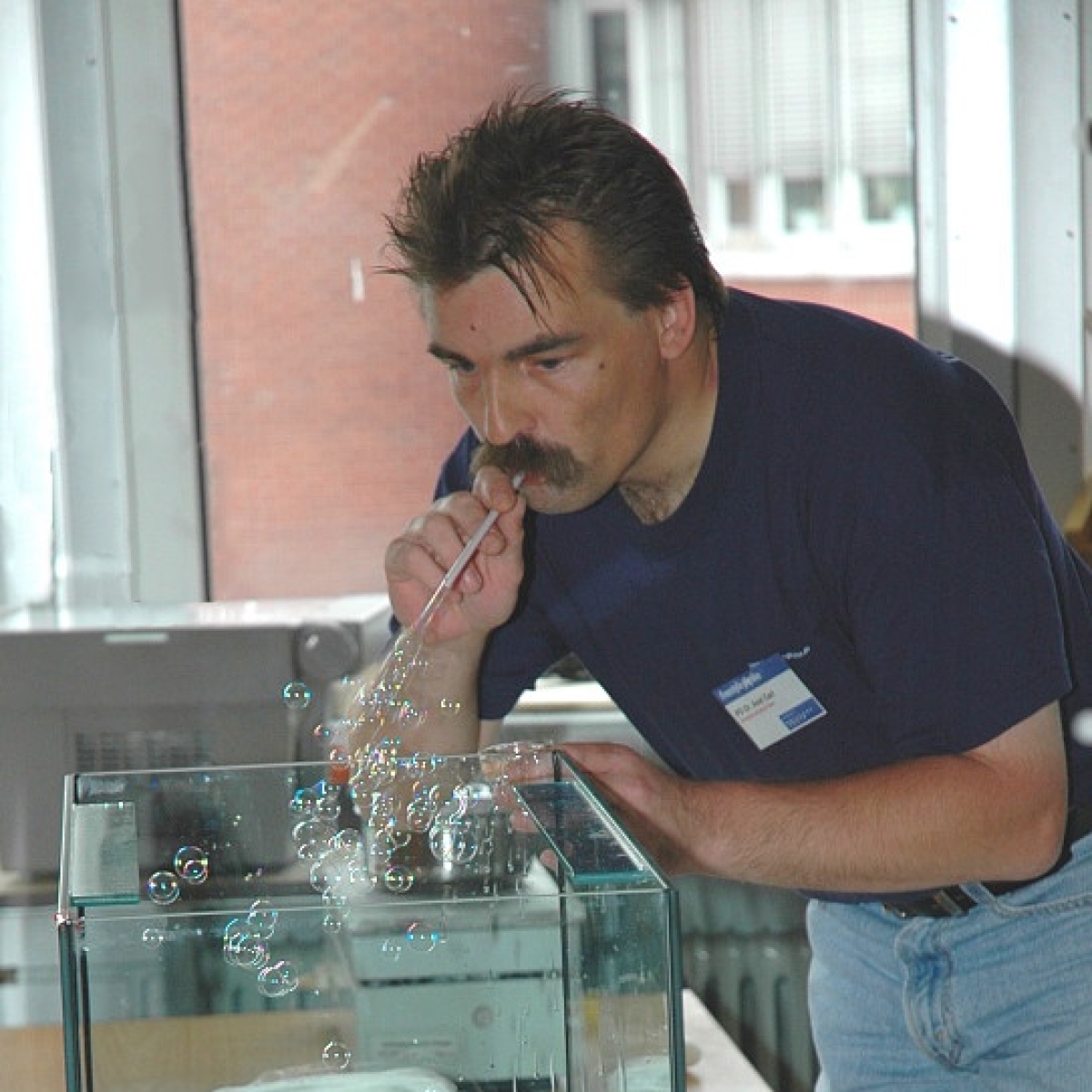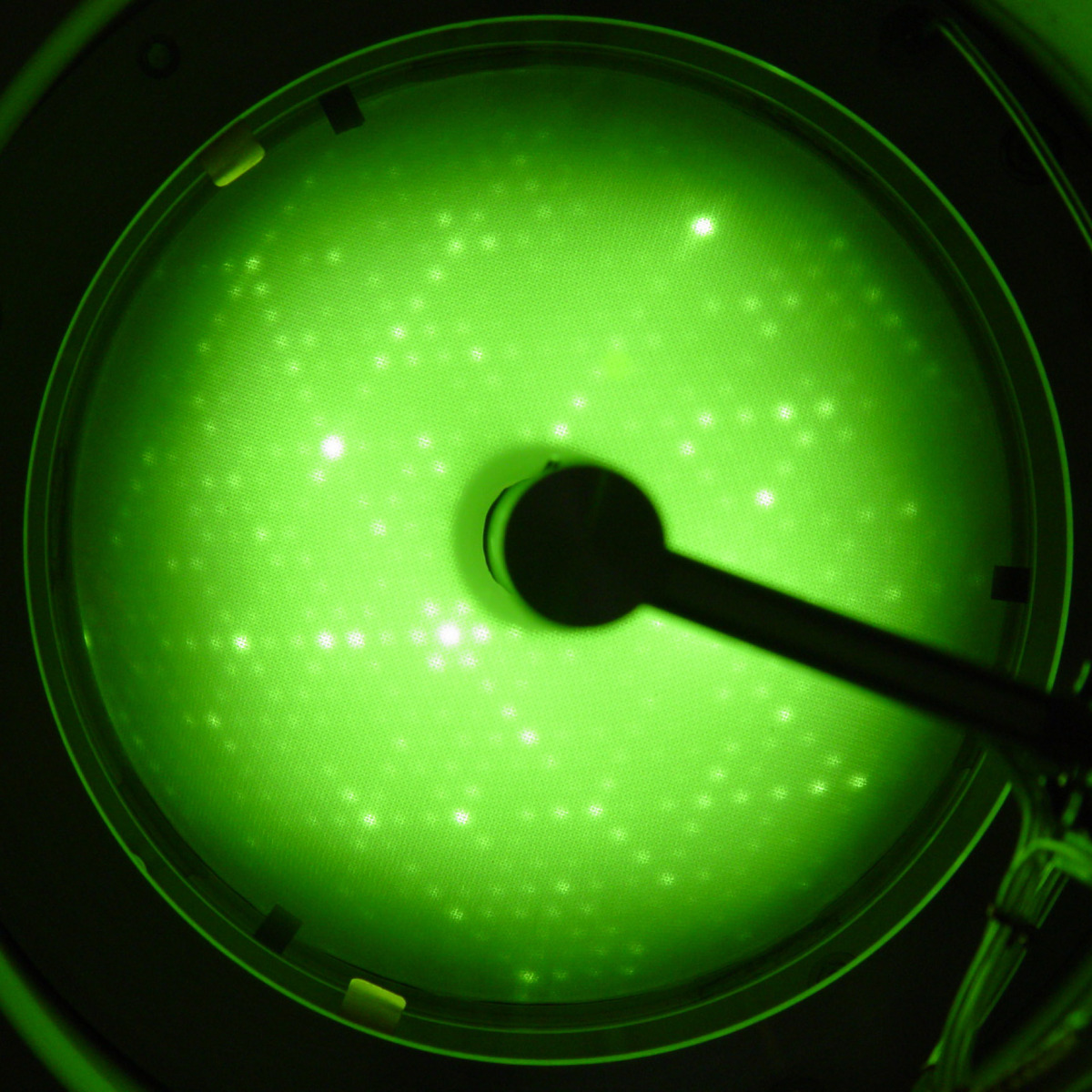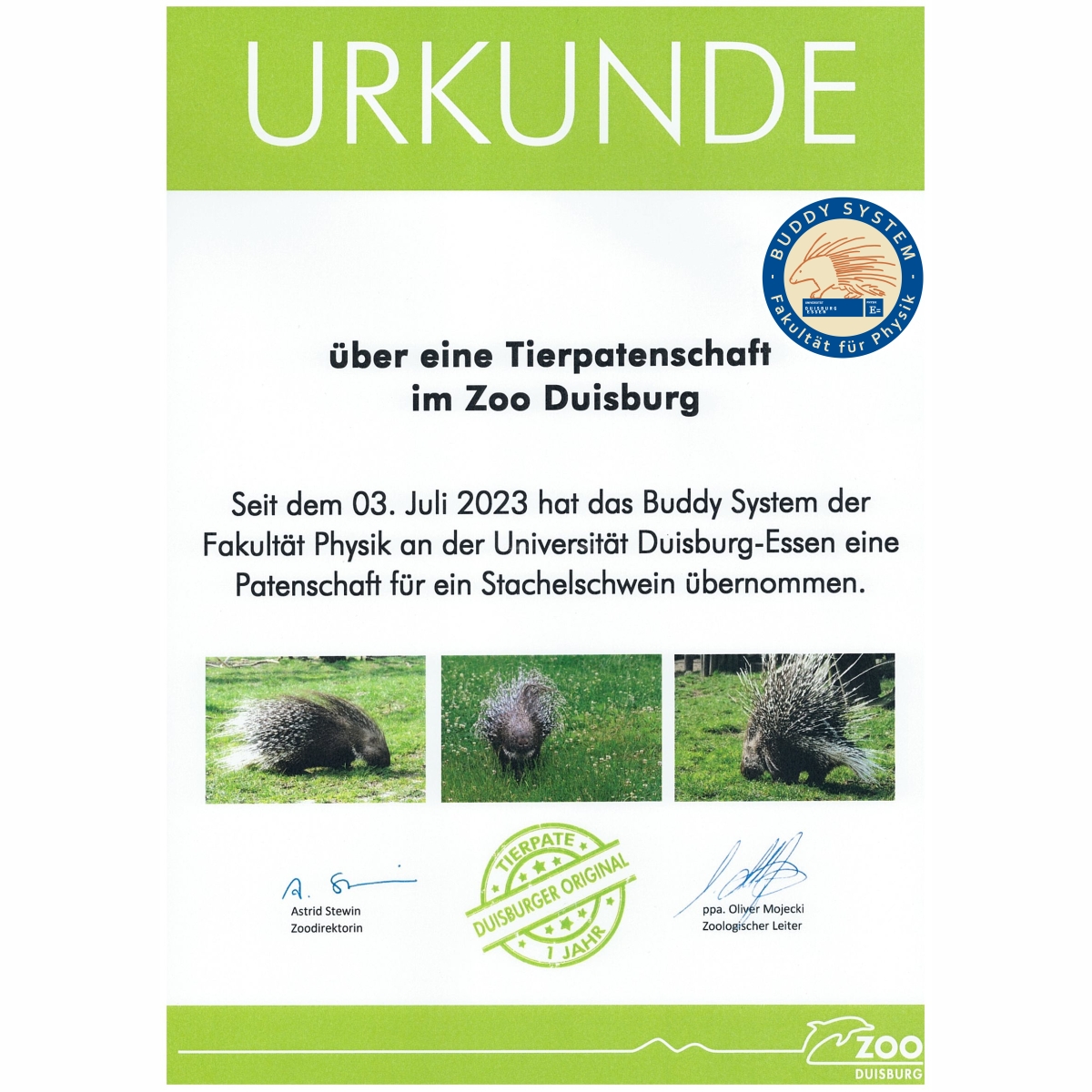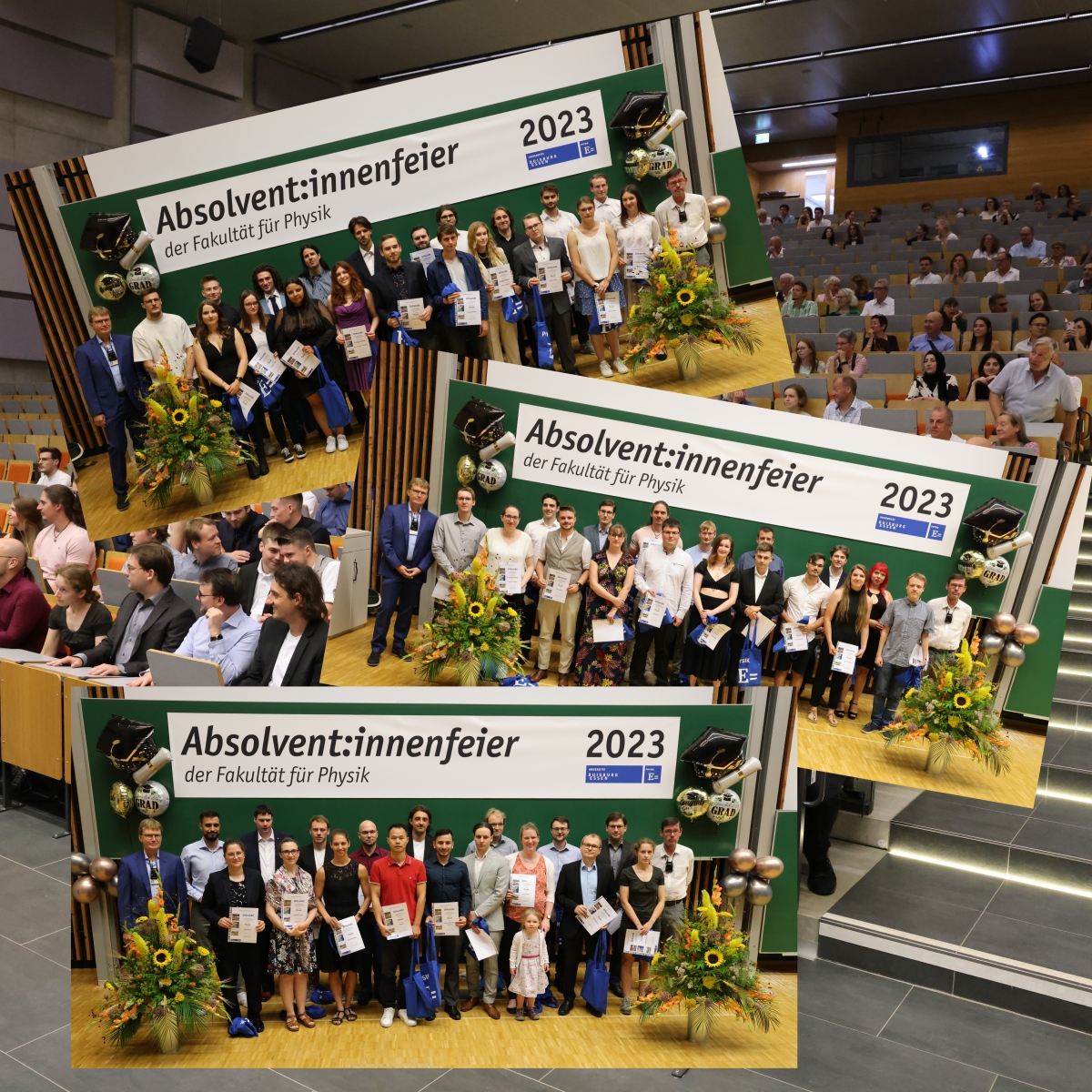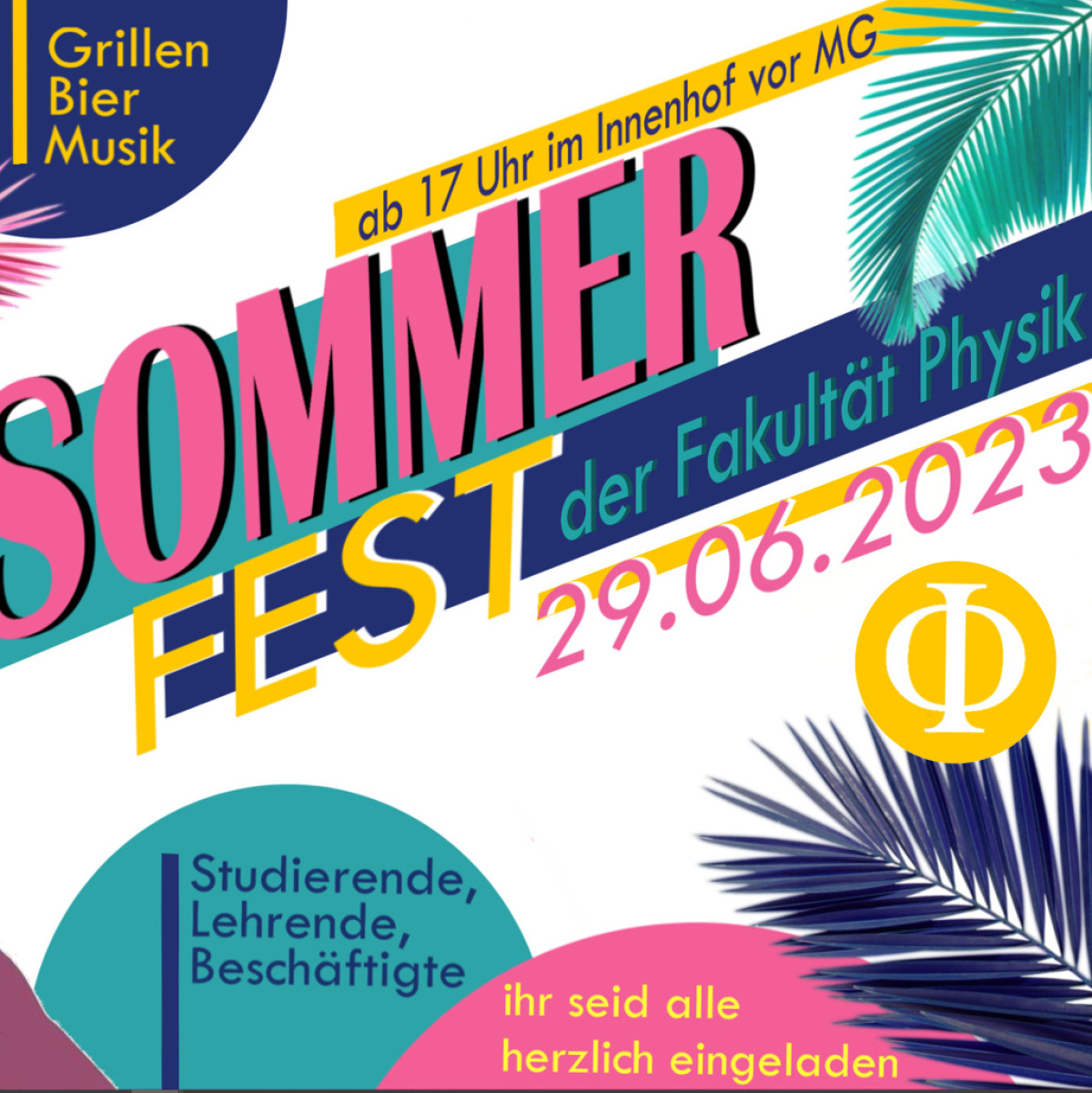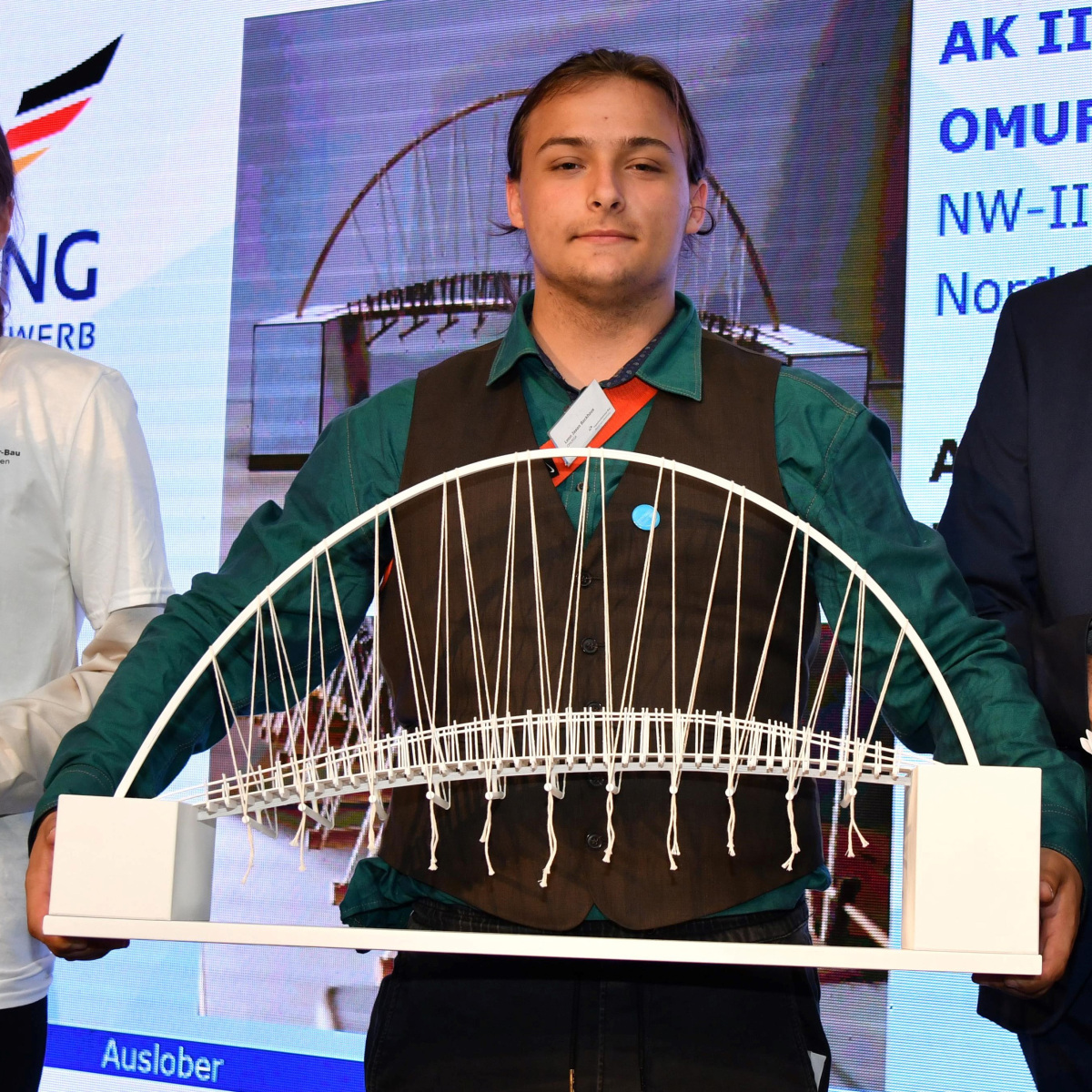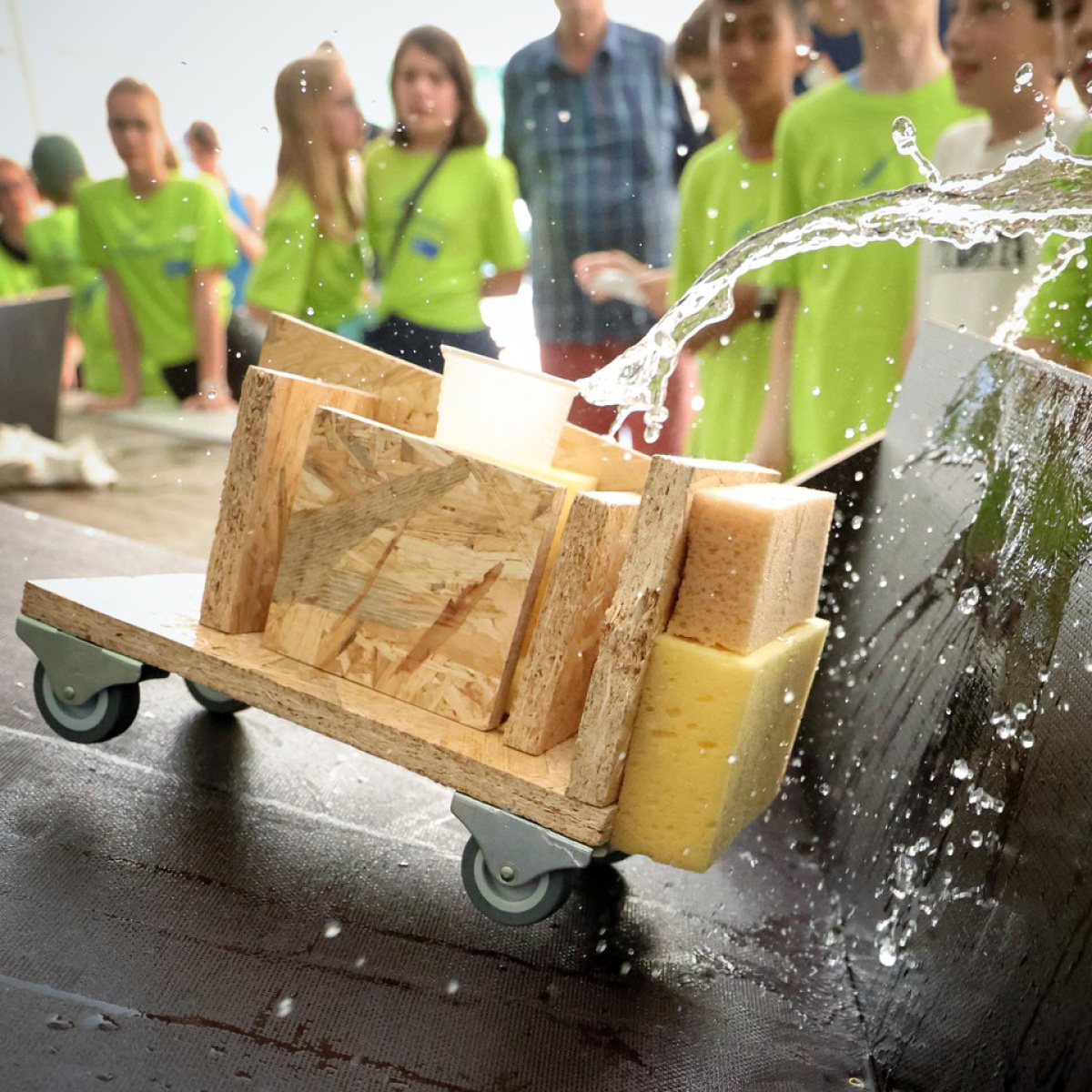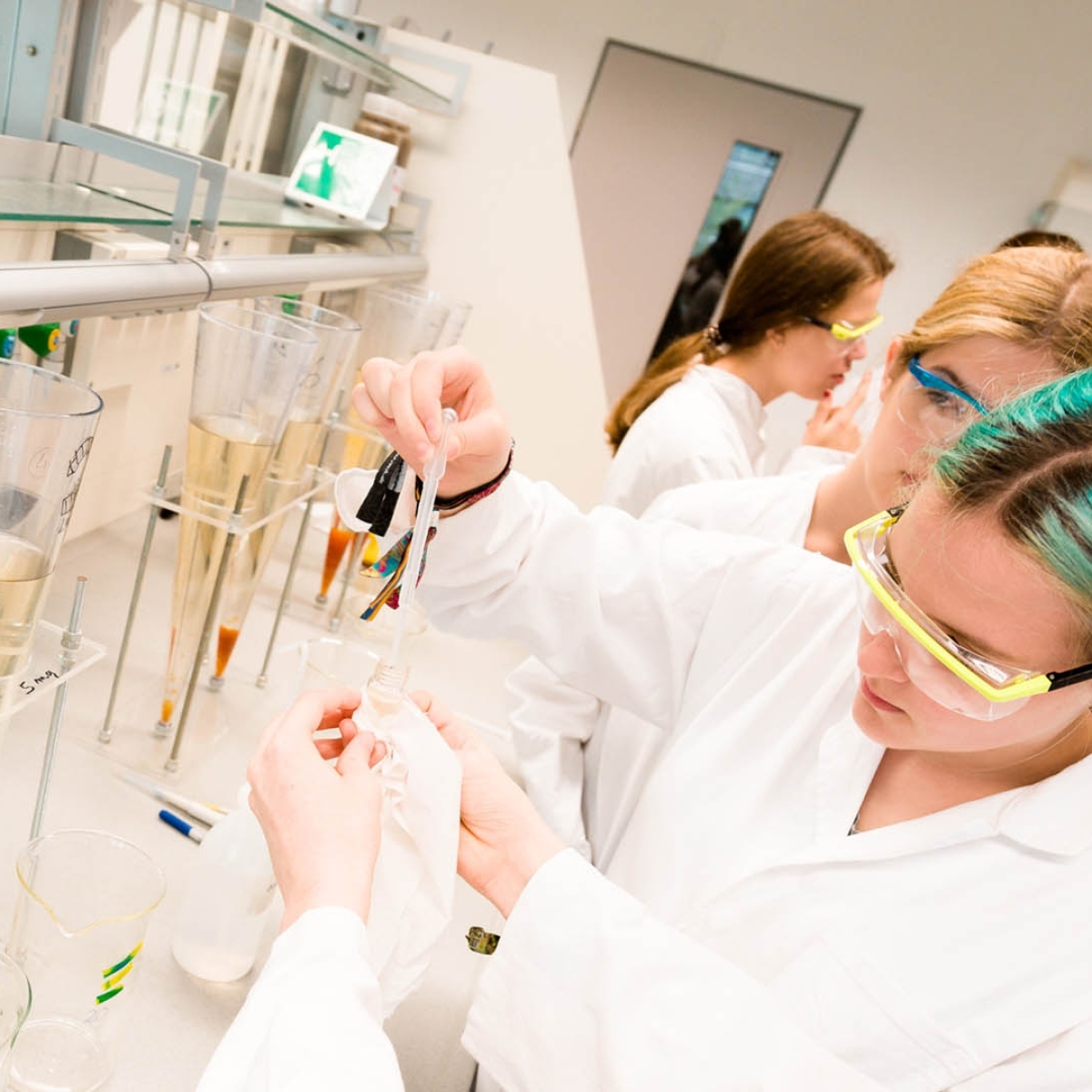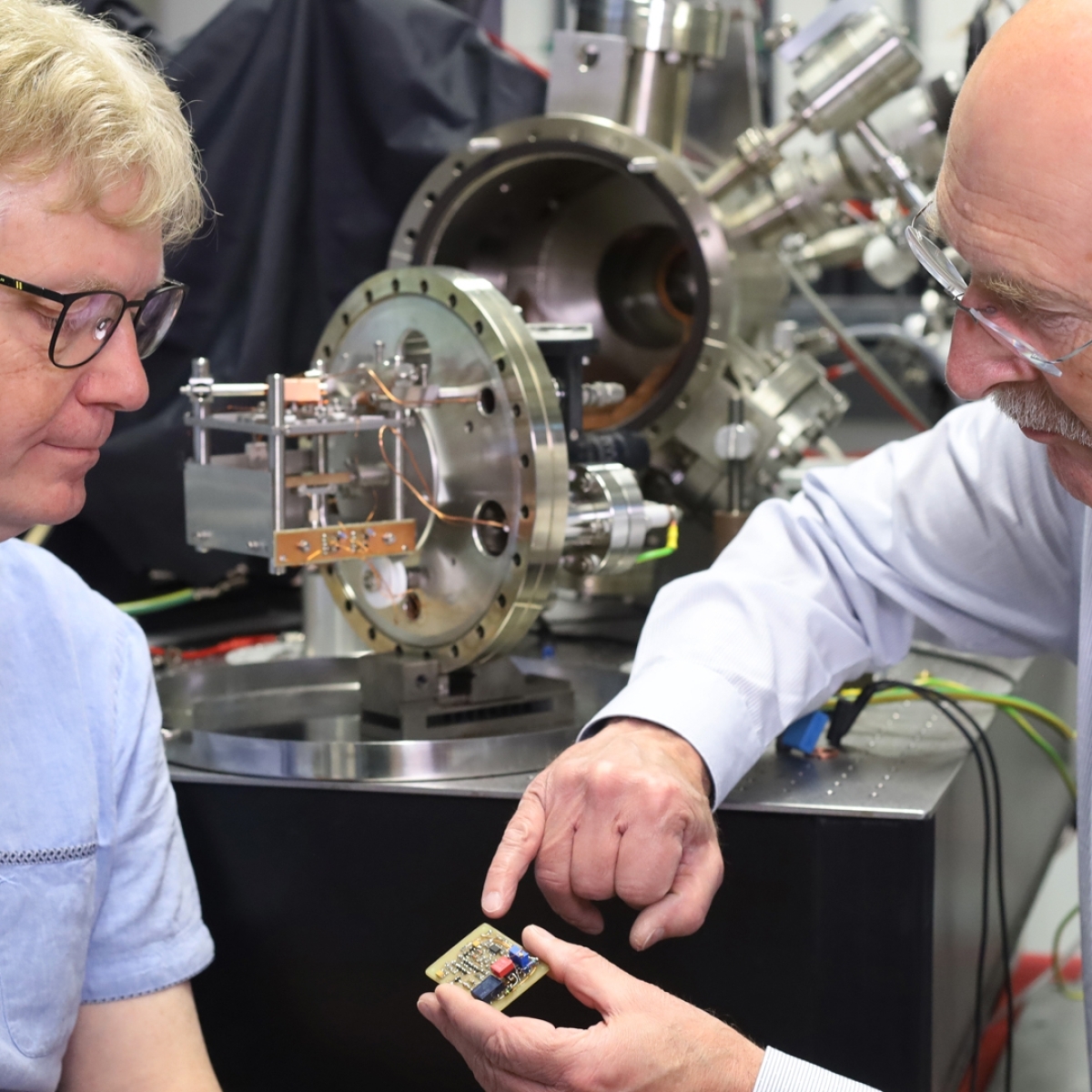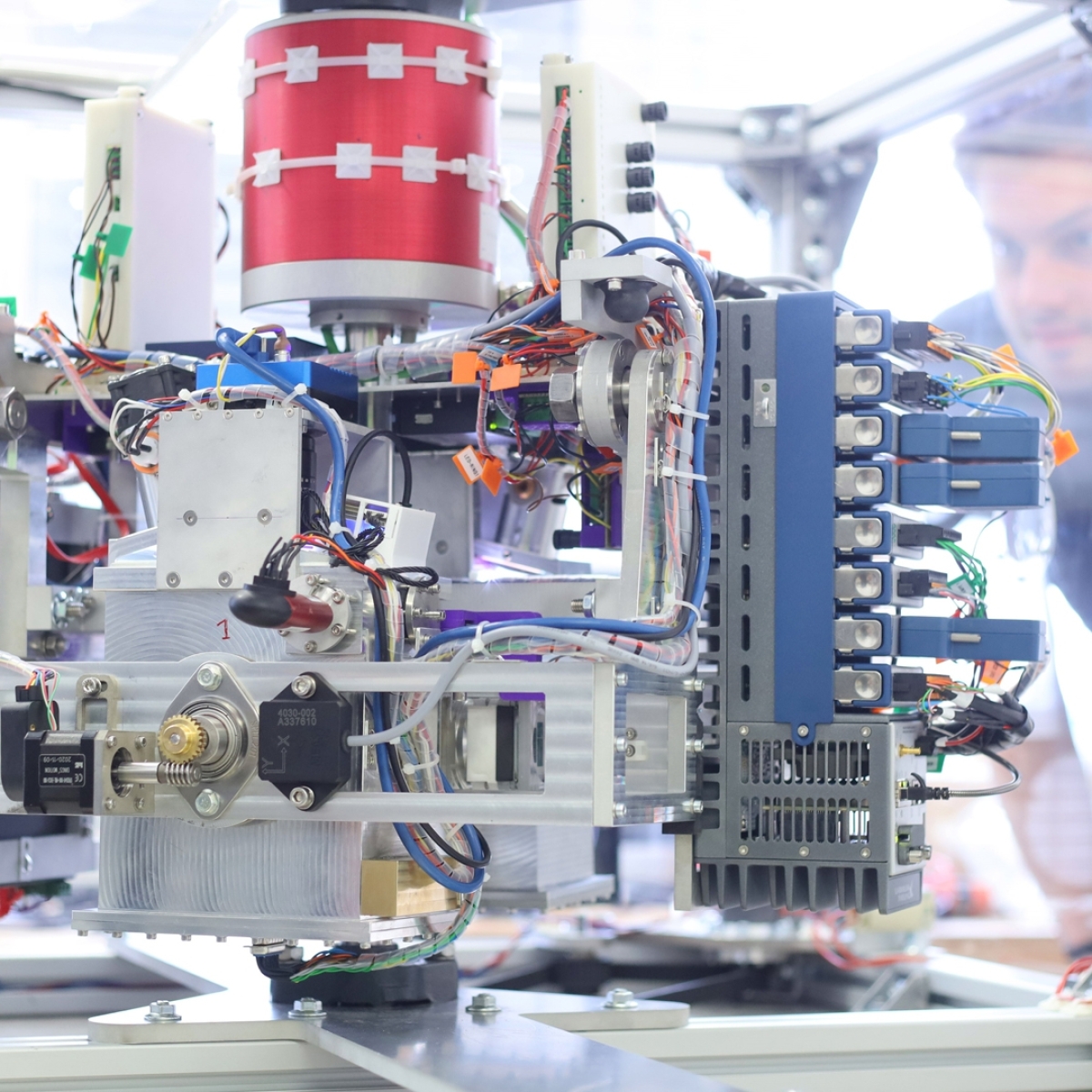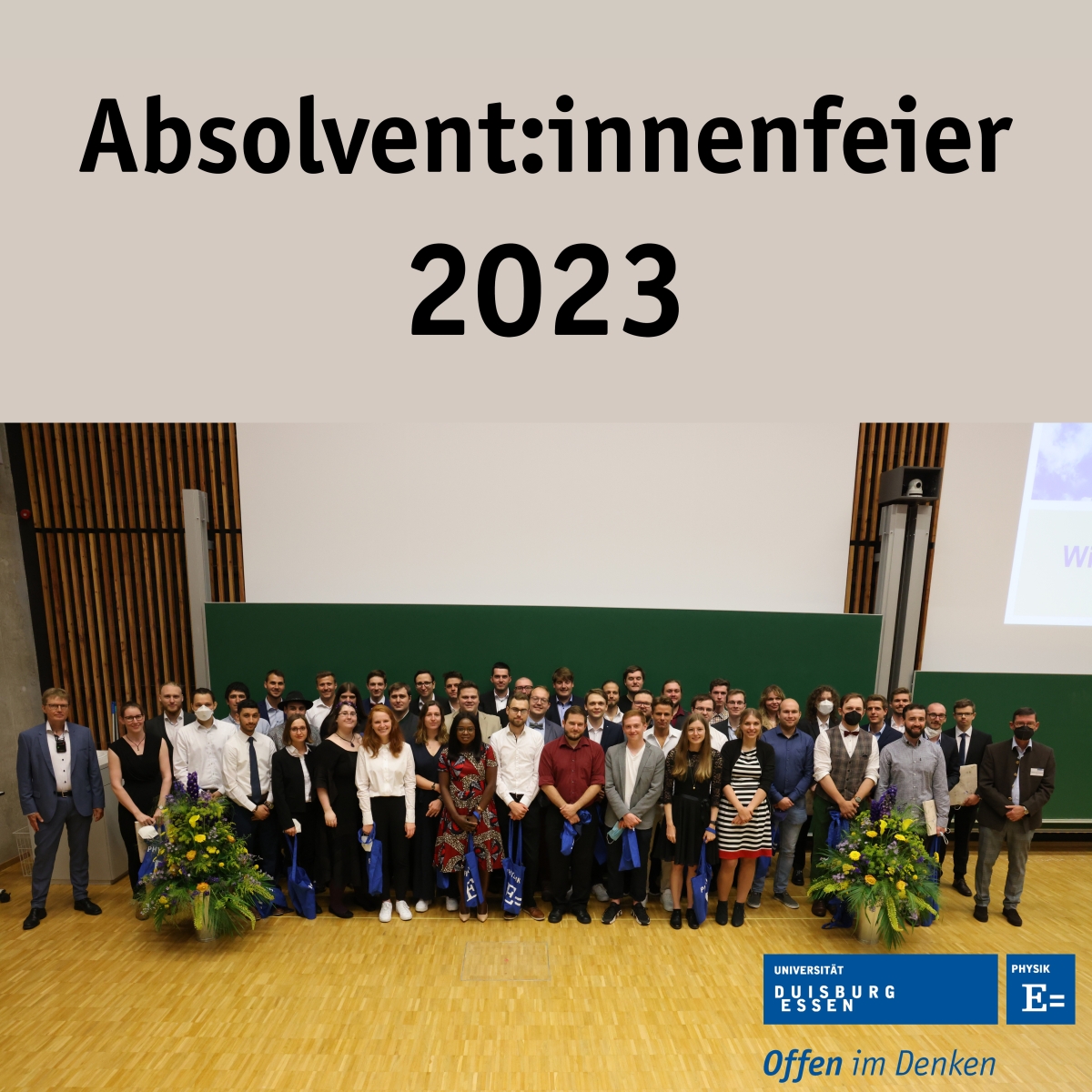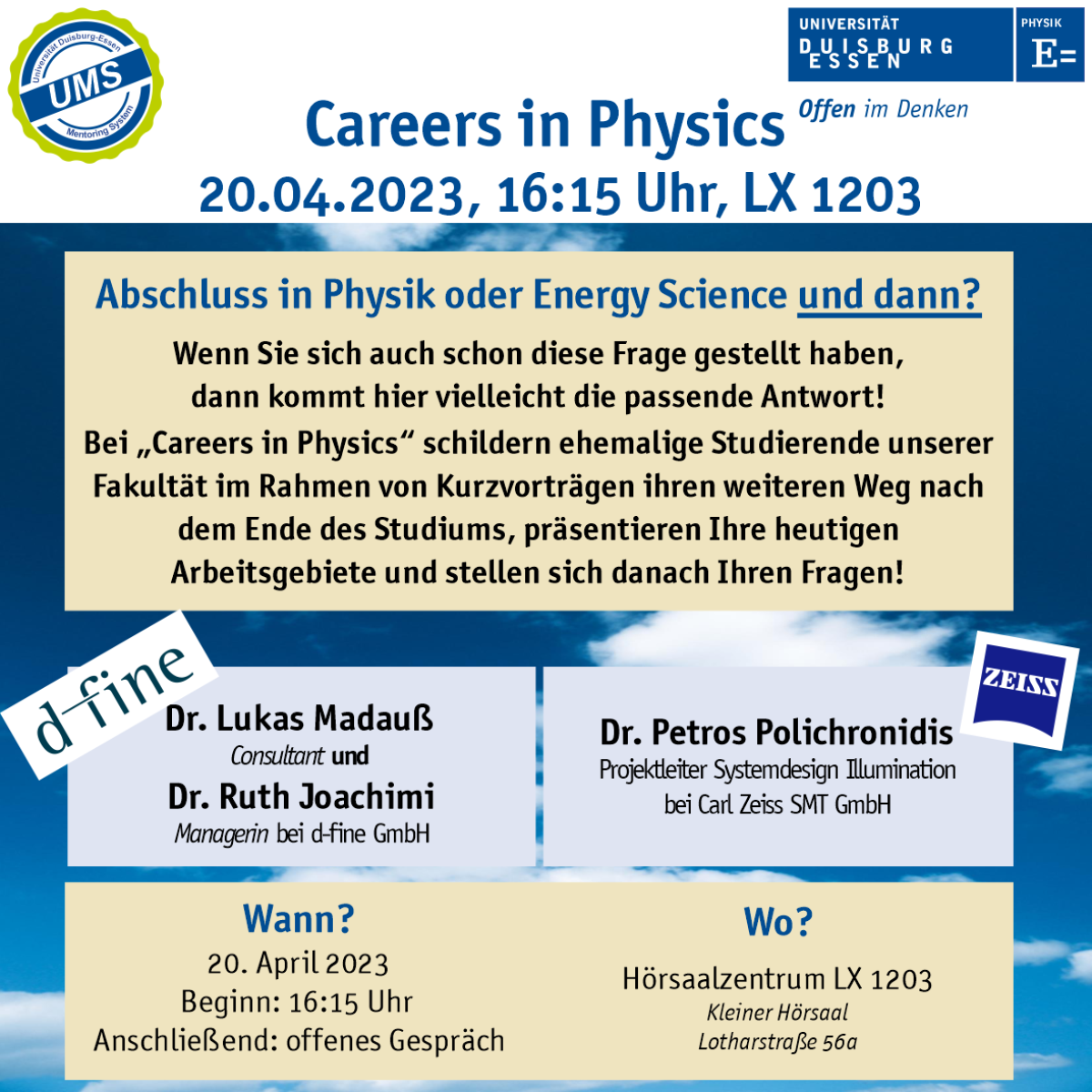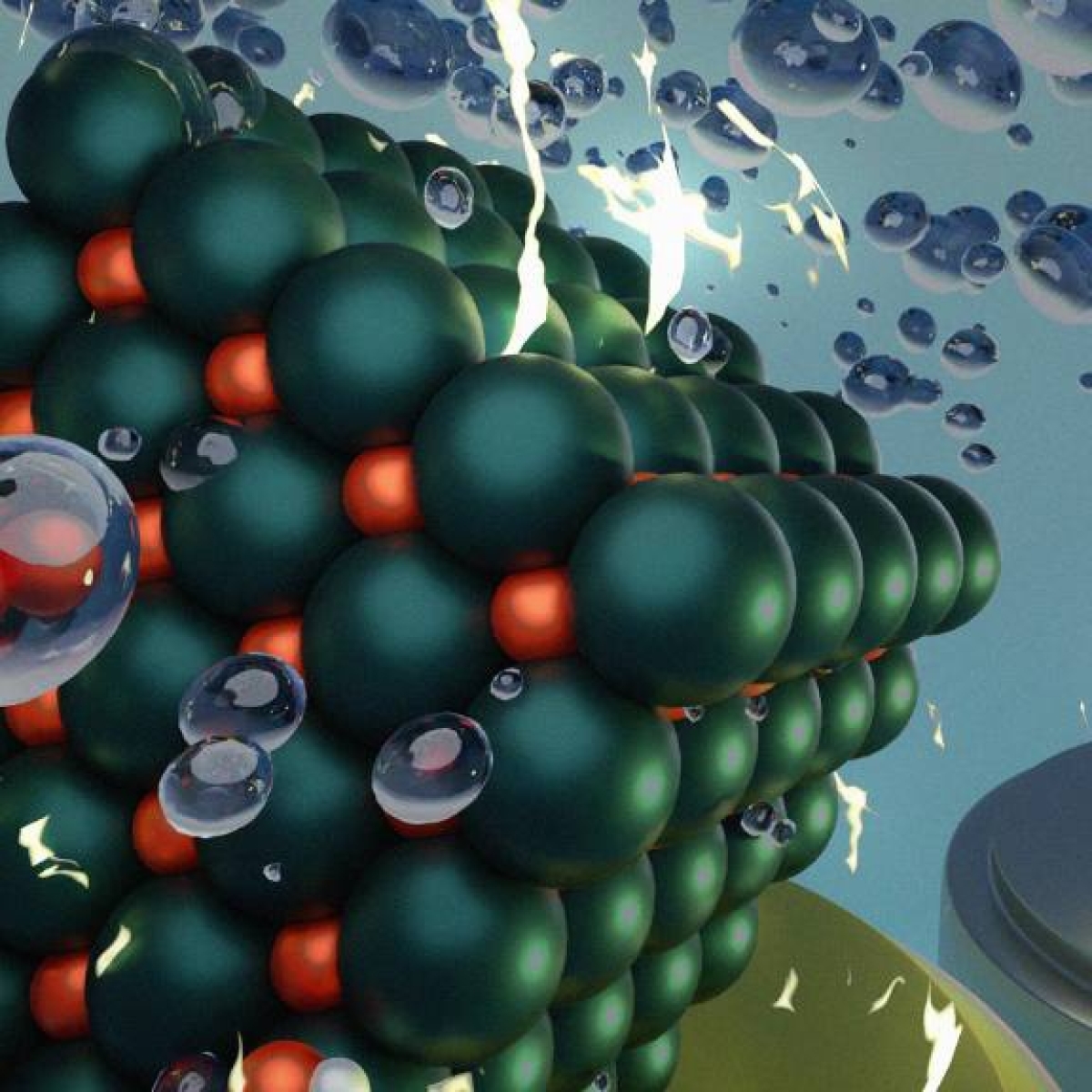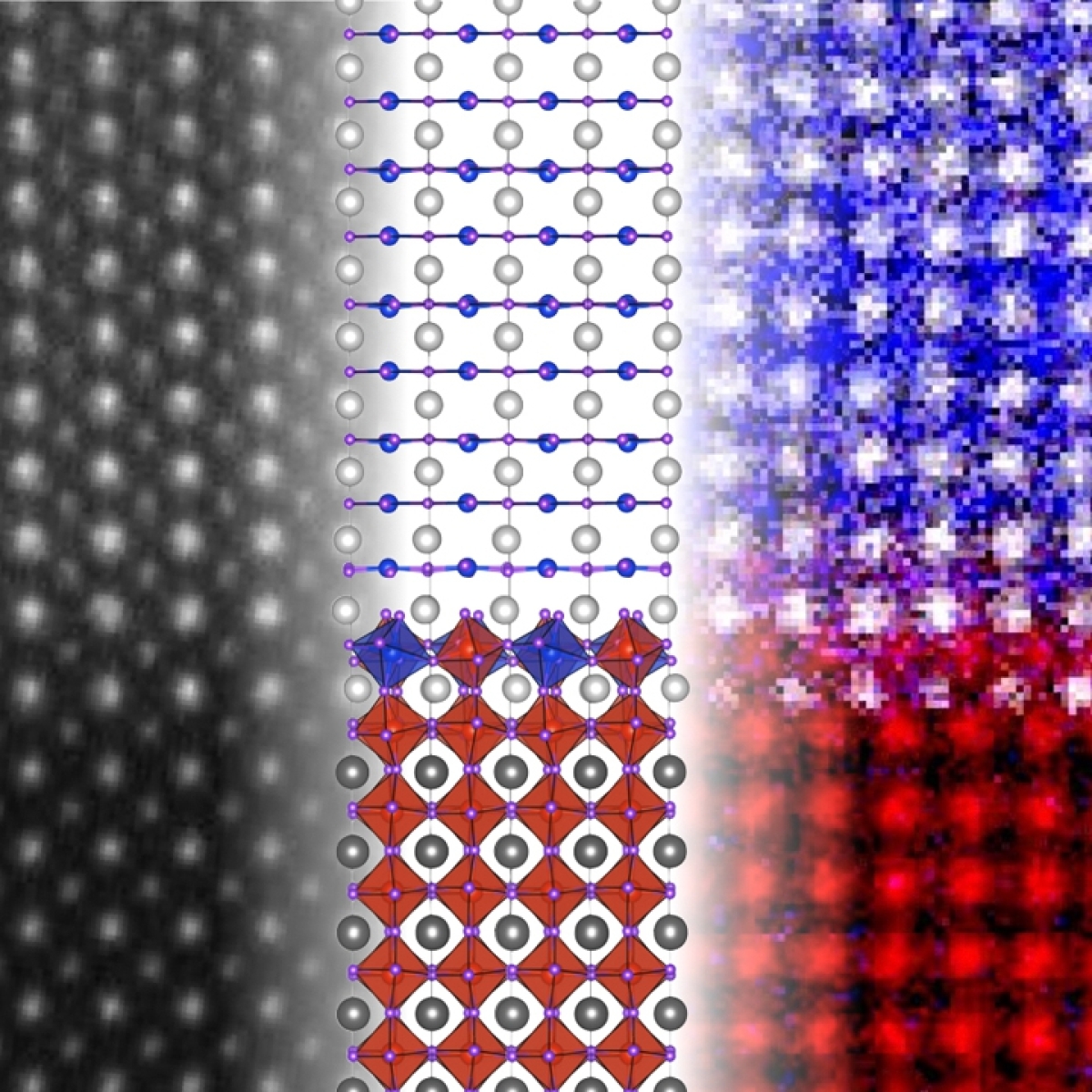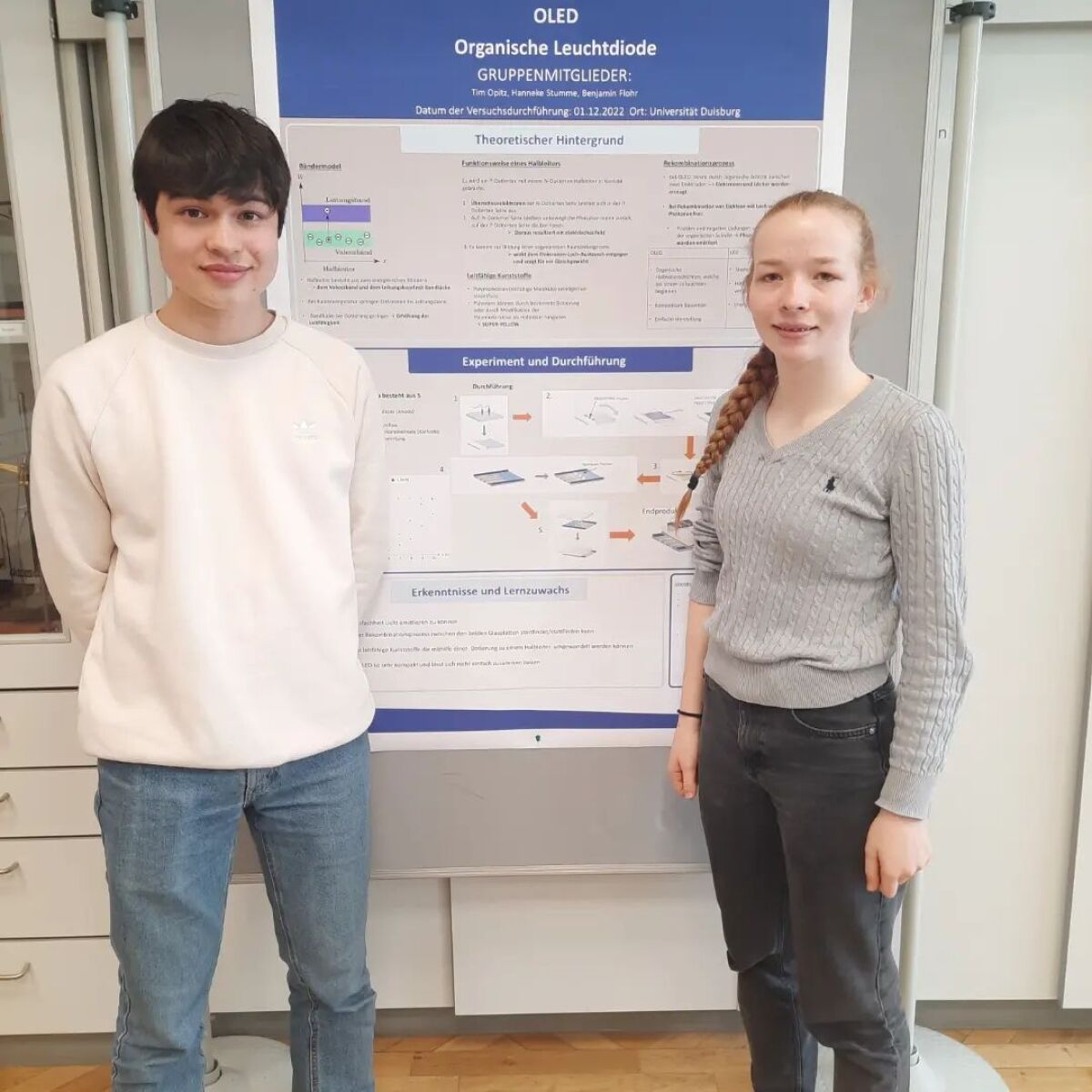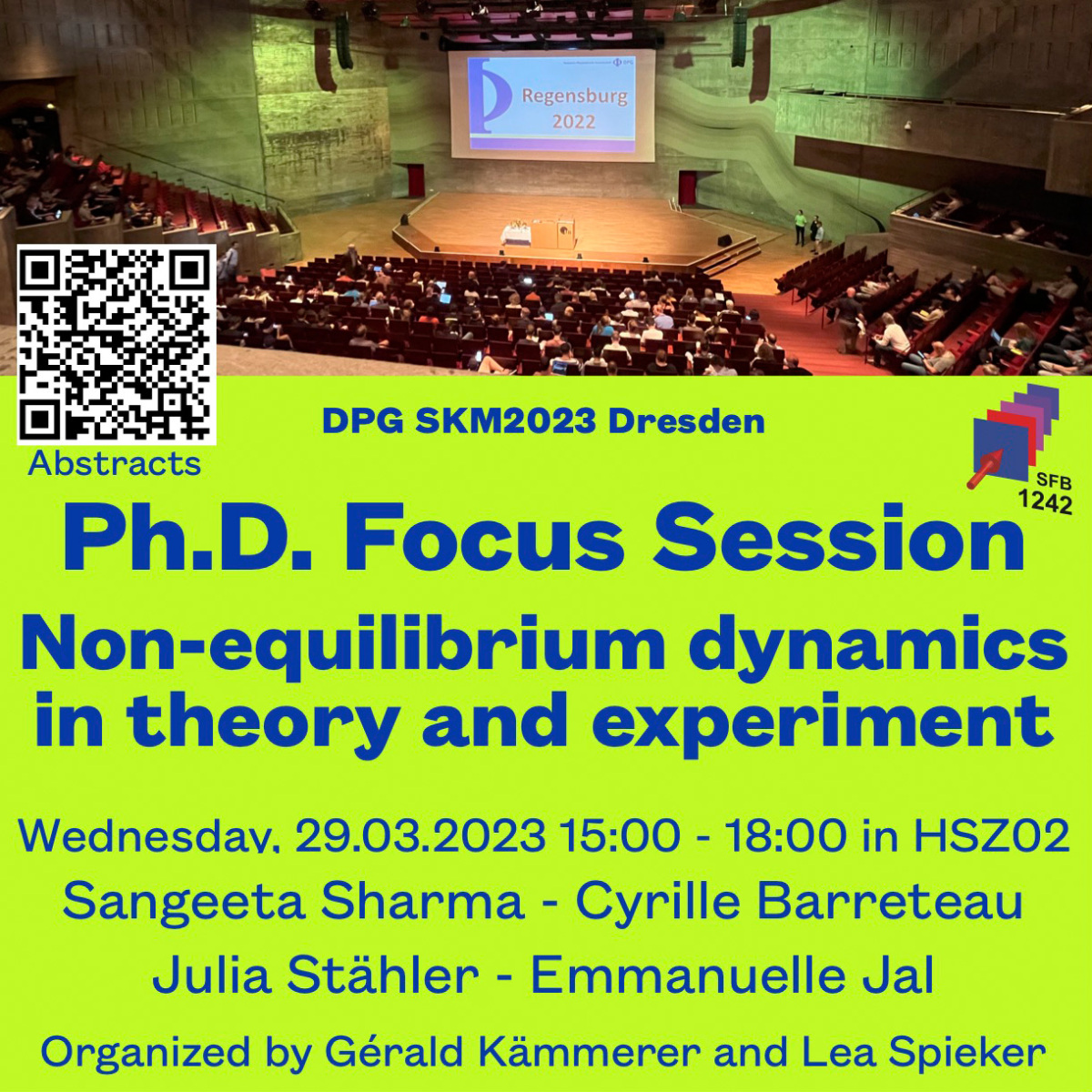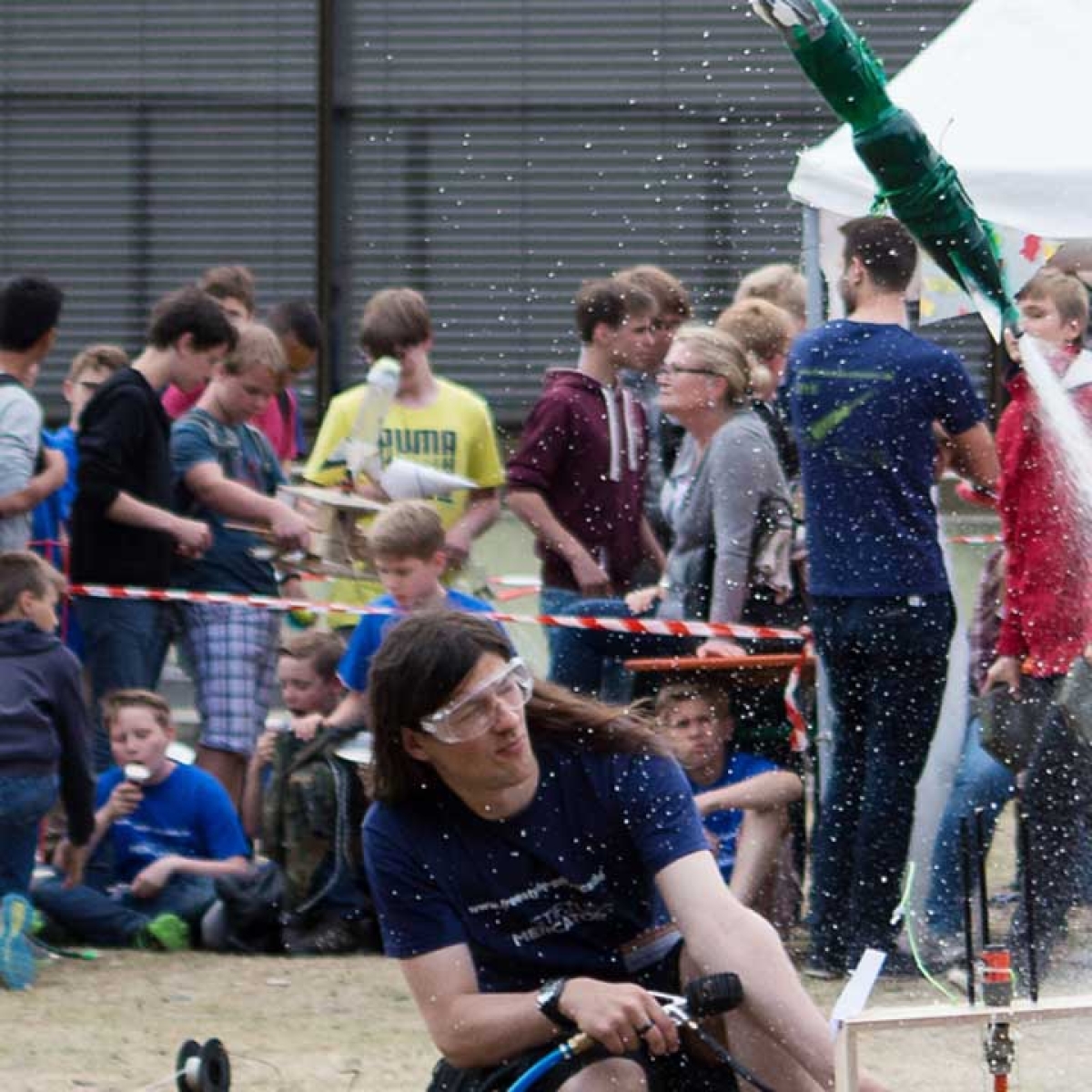News archive 2023
19.12.2023Science Podcast by André Maas: Physics in "The Martian"
Dr Mai Thi Nguyen-Kim has shown us how science communication works and how important it is for all of us. Her lecture as Mercator Professor was extremely impressive. A podcast by André Maas entitled Physics in "The Martian" shows that interest in this topic is not new to us.
He created the podcast as part of a Science Communication Podcast Workshop organised by Cenide. The podcast workshop was led by highly experienced podcasters: Theresa Schredelseker, Peter Kohl and the star in podcast heaven Nicolas Wöhrl (Methodisch inkorrekt)
André Maas is a doctoral student at AG Schleberger. However, his podcast is not about the research for his doctoral thesis, but about the physics in the feature film "The Martian - Save Mark Watney"
Got curious? Then have fun listening!
18.12.2023Path to sustainable hydrogen
Targeted optimization of electrocatalysts
Editor: Jennifer Meina
No sustainable energy without electrocatalysts: For the production of green hydrogen, catalysts are needed to control the process of splitting water into oxygen and hydrogen. However, the structure of the catalyst may change when an electrical voltage is applied, which also has a decisive influence on the catalytic activity. This phenomenon is poorly understood – so far. A research team led by the University of Duisburg-Essen and the University of Twente has investigated the crystal facet-dependent surface transformation and how this controls the activity of the oxygen evolution reaction. Their results have been now published in Nature Communications.
Optimizing catalysts in a targeted manner by producing nanoparticles with a specific surface orientation - and thus producing cost-effective and sustainable hydrogen. Researchers from UDE, University of Twente, Forschungszentrum Jülich and Helmholtz Zentrum Berlin für Materialien und Energie have now taken a major step towards achieving this goal. They investigated the complementary half-reaction of the production of green hydrogen - the formation of oxygen. This partial reaction is more complex and requires highly efficient, cost-effective and environmentally friendly anode materials. However, the structure of the original catalyst often changes during this process - a phenomenon that is still poorly understood.
The scientists were able to prove that this transformation depends on the orientation of the catalyst’s surface and impacts the oxygen evolution reaction (OER). Higher OER activity means that the catalyst can generate oxygen more effectively, which in turn improves the efficiency and sustainability of the hydrogen production process.
In their study, the scientists used lanthanum nickel oxide films (LaNiO3) - a crystalline material of the "perovskite" class that is used in electrocatalysis. The researchers discovered that the uppermost layers transform during the reaction and exhibit different OER activity. Thereby, the octahedron-shaped building blocks connect via the edges instead of the corners. This oxyhydroxide structure was modelled using quantum mechanical simulations on various perovskite surfaces by Achim Füngerlings in the working group of Prof. Dr Rossitza Pentcheva on the UDE's high-performance computer (magnitUDE). "The results show that for the facet with the highest activity, the transformed layer fits much better on the underlying perovskite," says Füngerlings.
"This significantly influences the electronic and magnetic properties and explains the improved OER activity," explains Pentcheva. "The close cooperation of experiments and simulations was crucial in order to elucidate the underlying mechanisms and properties of the surface transformation." The results of the study are important for the future optimization of catalysts by producing nanoparticles with a specific surface orientation.
Image:
Schematic side view of the transformed layer (light grey) on top of the perovskite film (green) grown on a substate (brown). (right) zoom-in of the side view of the transfromed layer together with spin density at the Ni sites from the density functional theory calculations.
Further Information:
Crystal-facet-dependent surface transformation dictates the oxygen evolution reaction activity in lanthanum nickelate; DOI:https://doi.org/10.1038/s41467-023-43901-z
Prof. Dr. Rossitza Pentcheva, Theoretische Physik, Tel. 0203/379-2238,rossitza.pentcheva@uni-duisburg-essen.de
Redaktion: Jennifer Meina, Tel. 0203/379-1205,jennifer.meina@uni-due.de
18.12.2023Appointment of Dr Babtiste Jean Germaine Gault as Honorary Professor
Mr Gault from the Max Planck Institute for Iron Research GmbH is a world-leading expert in the field of atom probe tomography. This method makes it possible to analyse materials down to their atomic structure and chemical composition and thus establish the relationship to physical properties with previously inaccessible precision. With his expertise in energy-relevant research, Mr Gault strengthens our Faculty of Physics as well as the CENIDE research network. Together with Prof. Dr rer. nat. Leopoldo Molina-Luna, he heads the project "Advanced analytical electron microscopy and atom probe tomography" in the CRC/TRR 270 HoMMage CRC. In addition to his valuable support in research, Mr Gault will also give lectures in our faculty. On 12 December 2024, he was presented with the certificate of appointment as Honorary Professor by the Dean of the Faculty of Physics, Prof. Dr Michael Schreckenberg.
04.12.2023On/Off in Trillionths of a Second
Editor: Birte Vierjahn
Stimulated by corkscrew-shaped radiation: physicists at the University of Duisburg-Essen and their cooperating partners have discovered that tiny graphene sheets can become electromagnets under infrared radiation. Nature Communicationsreports on the findings.
The sample itself is invisible to the human eye: there are tiny discs on a 2 x 2 millimeter surface, each with a diameter of 1.2 micrometers, just one hundredth of an average human hair. They consist of two layers of graphene – two sheets of carbon atoms that lie on top of each other like pancakes. Their electrons move freely in the material and can be influenced by electromagnetic fields.
The working group of Prof. Dr. Martin Mittendorff from Experimental Physics at the University of Duisburg-Essen (UDE) has been investigating waves in electron systems, so-called plasmons, within the Collaborative Research Center 1242 for years. In this case, the team used circularly polarized terahertz (THz) radiation in the infrared range to excite the electrons. "You can think of the graphene sheets as buckets filled with water – the electrons," explains Mittendorff. "If you stir the inside of the bucket with a stick, circular currents begin to form."
In analogy, the charge carriers excited by the corkscrew-shaped THz radiation move in a circular motion in the discs and thus act like tiny electromagnets. Within the experiment, magnetic fields in the range of 0.5 Tesla were generated; this equates to around 10,000 times the Earth's magnetic field. The frequency of the plasmon can be adjusted via the diameter of the graphene disc. In terms of their effect, the tiny discs are comparable to strong permanent magnets, but they can be switched on or off within picoseconds – in other words, in a trillionth part of a second.
Although the experiments are basic research, there are realistic potential applications: By using graphene discs, the physicists have developed optically switched magnetic fields that can be used to influence other materials in the vicinity. In quantum dots that illuminate screens, for example, the color of the light can be adjusted. As for magnetocaloric materials, they change their temperature depending on the magnetic field applied.
This publication is the result of a collaboration between the Mittendorff working group and national and international partners: The graphene discs were manufactured at the University of Maryland (USA) and the measurements were carried out at the Helmholtz-Zentrum Dresden-Rossendorf.
Photo: Prof. Dr. Martin Mittendorff behind the experimental setup.
Original Publication:
https://doi.org/10.1038/s41467-023-43412-x
Further Information:
Prof. Dr. Martin Mittendorff, experimental physics, +49 203/37 9-2273, martin.mittendorff@uni-due.de
Editor: Birte Vierjahn, +49 203/37 9-2427, birte.vierjahn@uni-due.de
04.12.2023Generally understandable lecture on this year's Nobel Prizes in Physics and Chemistry
As already reported, the topics of attosecond pulses and quantum sparks, for which the Nobel Prize in Physics and the Nobel Prize in Chemistry were awarded this year, are very hot topics in our Collaborative Research Centre SFB 1242. The Nobel Prize winner for Prof. Dr Anne L'Huillier has already been a guest at our colloquium. Prof Dr Axel Lorke will give a generally understandable introduction (in German). Anyone interested in this cutting-edge research is cordially invited to attend.
Time: Monday, 11 December 2023, 6 pm
Location: Lotharstraße 65, Building LB, Room LB 134 (map)
30.11.2023Nature publication confirms theory - Star birth in a distant galaxy
Over 160,000 light years away from us, there are striking parallels to our Milky Way: although the environment and conditions are different, the celestial bodies are formed in the same way. Prof. Dr. Rolf Kuiper from the University of Duisburg-Essen made this discovery with colleagues from England and the USA by looking into another galaxy. The team has now published its findings in the renowned journal Nature, confirming earlier observations and current theories.
Stars and planets in our Milky Way are formed from gigantic clouds of gas and dust. At the beginning, the clouds contract due to their own gravity. This causes the gas and dust to condense into a flat rotating disk, the accretion disk. A young star forms in the middle of this disk - around which the planets or other stars later orbit. Within this rotating disk, dust grains collide and merge and more and more matter is created. Eventually these reach a sufficient size to generate enough gravity themselves and form into fully-fledged planets. This process takes place over a long period of millions to billions of years.
Prof. Rolf Kuiper, Professor of Theoretical Physics at the University of Duisburg-Essen (UDE) with a focus on planetary research, is focusing his research on accretion disks. So far, these have only been discovered around stars in our own galaxy. The team used one of the world's most powerful telescopes: ALMA is located in the Chilean Atacama Desert, is operated by the ESO (European Southern Observatory) together with international partners and works like a gigantic zoom lens. It can be used to explore the universe in the millimeter and submillimeter range of the electromagnetic spectrum with unprecedented sensitivity and resolution.
Using the latest configuration of the ALMA telescope, he and his colleagues have now been able to prove for the first time that an accretion disk also rotates around a star outside our galaxy, in the Large Magellanic Cloud. "This indicates that stars in other galaxies form in a similar way to ours," says Kuiper. The main difference is that the system of star, jet and disk is optically visible in this case and is not deeply embedded in its cloud of origin, as would be expected for a young massive star. The explanation: the environment is different from ours, there are fewer heavy elements and less dust. "This helps us to understand even better how stars and planets form."
Back in 2018, the team published research findings in which they were able to detect the jet belonging to this star and its accretion disk. The research team concluded that high-mass stars probably form in a similar way to low-mass stars, by taking in material from disks around them. This means that the same laws of physics apply to stars regardless of their size. This theory has now also been confirmed by the latest observations.
Image:
Using the ALMA telescope, the scientists have now been able to observe a disk around a young massive star in another galaxy. The image shows the parent cloud LHA 120-N 180B, in which this system (HH 1177) was first observed. The image in the center shows the jet accompanying the system. The upper part of the jet is pointing slightly towards us (blue); the lower part is moving away from us (red). The images (r.) thus revealed the rotating disk around the star, the sides of which are also moving towards and away from us.
Further information:
Click here for the article: https://www.nature.com/articles/s41586-023-06790-2
https://www.uni-due.de/physik/agk/
Prof. Dr. rer. nat. Rolf Kuiper, Faculty of Physics, rolf.kuiper@uni-due.de
Editor: Jennifer Meina, Tel. 0203/379-1205, jennifer.meina@uni-due.de
27.11.2023New magnets for sustainable energy technologies - Transregio goes into second funding period
Super-strong permanent magnets for wind turbines or materials for magnetic cooling - both are crucial for a successful energy transition: New, optimized functional materials are the cornerstones of a low-emission future. The collaborative research center "HoMMage*" has already been located at TU Darmstadt and the University of Duisburg-Essen for four years. From January 2024, it will be funded by the German Research Foundation for a further four years with around 12 million euros.
Powerful, durable and efficient permanent magnets are core components in wind turbines, electric cars and in the field of robotics. Scientists in the Collaborative Research Centre/Transregio "HoMMage" – many of them from the University of Duisburg-Essen (UDE) – are researching new, optimized magnetic materials. After all, a permanent magnet in an electric motor that is just two percent more efficient can increase the vehicle's range by 20 km.
The second focus of the research network is magnetocaloric materials: these change their temperature depending on the external magnetic field applied. Used smartly, they operate refrigerators and air conditioning systems highly efficiently without the need for climate-damaging coolants. In the future, magnetic cooling can also be used to liquefy the energy carrier hydrogen, making it suitable for transportation and storage.
Efficient magnetic materials are crucial in all of the technologies mentioned, but they often contain rare earths: raw materials that are temporarily unavailable due to political circumstances – therefore expensive – and usually harmful to the environment. "The scientists at HoMMage are researching and developing new materials that are both resource-saving and efficient – preferably without any rare earths. With this project, UDE and its partners are making an important contribution to increasing the efficiency of renewable energies such as wind power and also to their use in the growing field of electromobility – an essential prerequisite for the success of the energy transition," says Prof. Dr. Astrid Westendorf, UDE Vice-Rector for Research and Early-Career Researchers.
To this end, the researchers are developing new manufacturing processes by not only manipulating individual atoms, but also by deforming and reshaping entire workpieces. To predict successful material compositions and suitable, resource-saving production methods as accurately as possible and to avoid dead ends, the consortium is increasingly relying on technologies such as machine learning and additive manufacturing in the second funding period. "At UDE, we analyze the atomic structure of magnetic materials using state-of-the-art physical methods in experiment and theory from the nanoscale to the macroscopic component. We also use additive manufacturing for the production of prototype materials," explains Prof. Dr. Michael Farle, HoMMage’s Co-Speaker at UDE.
HoMMage is a research network under the leadership of TU Darmstadt (Prof. Dr. Oliver Gutfleisch). Further cooperation partners are the Max Planck Institute for Iron Research Düsseldorf, the Ernst Ruska Centre for Microscopy and Spectroscopy with Electrons at the Forschungszentrum Jülich and the University of Wuppertal.
* Hysteresis design of magnetic materials for efficient energy conversion
Image: Insight into the material – magnetic domains under the microscope. The scale shows the length of 50 micrometers, which corresponds to 0.05 millimeters.
(published in Ener et al., Acta Materialia 214, 116968 (2021)).
Further Information:
Prof. Dr. Michael Farle, Co-Speaker CRC/TRR 270 at UDE, +49 203/37 9-2075, michael.farle@uni-due.de
Editors:
Dr.-Ing. Sonja Laubach, TU Darmstadt, +49 6151/16-22153, sonja.laubach@tu-darmstadt.de
Birte Vierjahn, UDE, +49 203/37 9-2427, birte.vierjahn@uni-due.de
14.11.2023Prof. Dr Manuel Gruber is awarded the Gaede Prize of the DPG
We congratulate our junior professor Dr Manuel Gruber on being awarded the Gaede Prize of the German Physical Society. He receives the award "for his pioneering work on spin-crossover molecules on surfaces."
Mr Gruber has been a junior professor in our Faculty of Physics for three years and is continuing his research into the spin crossover of single molecules, in which he investigates magnetic molecules on surfaces.
In his groundbreaking research, he uses both low-temperature scanning tunnelling and atomic force microscopy as well as synchrotron radiation-based spectroscopy. One of his aims is to control the magnetisation of a molecule through mechanical movement in the molecule. He is also interested in the influence of molecular layers on surface magnetism. As the award shows, many other scientists also consider this question and, above all, Mr Gruber's answers to be extremely interesting.
Since summer 2022, he has been an important part of the CRC 1242 "Non-equilibrium dynamics of condensed matter in the time domain" with project A08.
Manuel Gruber studied physics in Strasbourg and received his doctorate in 2014 in the Cotutelle process at the University of Strasbourg and at KIT in Karlsruhe with a thesis on electronic and magnetic properties of hybrid organic-metallic interfaces. He then carried out postdoctoral research at the Christian-Albrechts-Universität zu Kiel in the group of Prof. R. Berndt until he was appointed junior professor at the University of Duisburg-Essen on 1 December 2020.
The award comes with prize money of up to €10,000. It will be awarded in March 2024 during the DPG Annual Meeting in Berlin.
14.11.2023New school laboratory - On the trail of the quantum
The new school laboratory at UDE delves into the world of extremely small energy particles: In the QuantumSchoolLab, students use lasers to get to the bottom of exciting phenomena in quantum technology. The digital equipment of the laboratory with interactive learning stations that support augmented reality is now being subsidised by the state of North Rhine-Westphalia with EU funds totalling almost 45,000 euros*.
Whether super-fast computers, highly sensitive sensors for medicine or tap-proof data transfer: the future belongs to quantum technology. "With the QuantumSchoolLab, we want to get pupils excited about this key technology and at the same time develop their digital skills," says Dr Kirsten Dunkhorst. She already runs the successful NanoSchoolLab for young people at the UDE.
The QuantumSchoolLab focuses on random numbers, cryptography, how a quantum computer works and the phenomenon of entanglement. Young people can use augmented reality (AR) and an AR app developed at the UDE to conduct research, access additional knowledge and materials or exchange ideas. The funding will be used to purchase specially equipped tablets and set up learning stations. The QuantumSchoolLab can be used by sixth form classes. "It would be a great success for us," says Dunkhorst, "if young people answer the question of what they want to do later: something to do with quanta."
*The QuantumSchoolLab receives funding from the REACT-EU-zdi programme. With this programme, North Rhine-Westphalia and the EU are specifically supporting extracurricular places of learning that can use the money to expand their digital infrastructure.
Further information:
Dr Kirsten Dunkhorst, Head of QuantumSchoolLab/ NanoSchoolLab, Tel. 0203/37 9-3409, kirsten.dunkhorst@uni-due.de
14.11.2023Energy Science project course on tour
After a successful test last year, an official "Energy Science" project course has been running for the first time since the beginning of the school year in collaboration with the Karl Ziegler School in Mülheim. Anyone familiar with our faculty will know that the name of the project course is no coincidence - we have had a degree programme of the same name for over 10 years.
At the start of the project course, Prof Dr Martin Mittendorff and Prof Dr Dietrich Wolf gave lectures in the field of energy science on five Mondays. In order to familiarise themselves with the topic of energy from a different perspective, the two pupils and five students visited the Gesellschaft für Nuklear Service (GNS) in Mülheim last week. The programme there began with an introductory lecture on nuclear energy, the technical implementation of the disposal of highly radioactive spent fuel elements and final and interim storage solutions. Afterwards, the students were able to see the famous CASTOR casks for themselves during a tour of the plant.
Next week, the students will be returning to the NanoSchoolLab at the university. There, the students will carry out experiments under the supervision of Dr Kirsten Dunkhorst that are thematically related to Energy Science. Two introductory sessions are initially planned. On the third date, the students then work mainly independently on their respective topics (e.g. solar cells, hydrogen cars, ...).
By taking part in the project course, the students can replace their "Facharbeit" and must create posters at the end of the project course and present the methods, experiments and results used to a panel of experts - just like at a small scientific conference.
As course coordinator, Dr. Anne-Kristin Pusch is not only responsible for the Energy Science course, but also for the organisational aspects of the project course.
08.11.2023Eavesdropping on the electron
A method developed at the UDE makes it possible to read data from noisy signals: Theoretical physicists and their experimental colleagues have collaborated on this and published their findings in the current issue of the renowned journal "Physical Review Research". The method they describe could also be significant for quantum computers.
You know it from the car radio: the weaker the signal, the more disturbing the noise. This is even more true for laboratory measurements. Researchers from the Collaborative Research Center 1242 and the Center for Nanointegration (CENIDE) at the UDE have now described a method for extracting data from noise.
What is a bit in a convantional computer, i.e. state 1 (current on) or state 0 (current off), is taken over in the quantum computer by the quantum bits, or qubits for short. To do this, they need defined and distinguishable states, but they can overlap at the same time and therefore enable many times the computing power of a current computer. This means they could also be used where today's supercomputers are overtaxed, for example in searching extremely large databases.
In Collaborative Research Center 1242, the smallest structures and their changes are studied, including quantum dots. These nanometer-sized structures can be tailored in their electronic and optical properties in the laboratory. Put simply, their electrons can assume two different directions of rotation ("spin up" and "spin down"). This is how the qubits needed for quantum computers can be realized. These should be stable for as long as possible so that no information is lost. "With our novel technique, we were able to demonstrate that spin states can be specifically prepared and at the same time determine how long such a state is maintained," explains Dr. Eric Kleinherbers, until recently a postdoc in the Theoretical Physics group headed by Prof. Dr. Jürgen König, now at the University of California, Los Angeles.
For this purpose, a quantum dot sample was permanently exposed to an exciting laser and the resulting noise was recorded over a long period of time. The theoretical physicists around Kleinherbers succeeded in extracting the lifetime of the spin states from this apparently random optical signal. Rolf Landauer, a pioneer of information theory, had already predicted this finding in 1998 and summarized it with the phrase "The noise is the signal!" The technique used now makes it possible to re-evaluate even older, seemingly useless data and to discover signals that had previously remained hidden.
Photo: A look inside the open cryostat: In operation, the slide with the mounted sample is analyzed in a vacuum at around -270°C.
Original publication: https://journals.aps.org/prresearch/abstract/10.1103/PhysRevResearch.5.043103
Further information:
Eric Kleinherbers, Theoretical Physics, +49 203/37 9- 3322, eric.kleinherbers@uni-due.de
Editor: Peter Kohl, CRC 1242, +49 203/37 9-2822, peter.kohl@uni-due.de
30.10.2023The Faculty of Physics mourns the death of Michael Bieske
Michael Bieske finished his training in the Mechanical Workshop at the University of Essen in the early eighties and was recommended to the group at that time. It quickly turned out that we had hit a jackpot with him. Michael Bieske was with us for about 40 years and during that time there was almost nothing he said "that won't work". Very rarely he said this, and then it really didn't work! In very many cases, his suggestions and ideas led to quickly finding a solution for sometimes challenging requirements. He developed essential components for various experimental facilities with which experiments could be run very successfully for many years. Last but not least, he also had a calming and balancing influence on the entire working group. Michael has not only earned our professional respect but also our friendship. We will miss Michael Bieske very much.
Prof. Dr. Dietrich von der Linde and Prof. Dr. Uwe Bovensiepen
30.10.2023Faculty Day of the Department of Physics
Wednesday, 13 December 2023, in lecture hall MC 122
The Faculty of Physics invites all staff members of the faculty - i.e. all professors, technical and administrative staff, PhD students and postdocs.
1:00 pmWelcome, review and outlook by the Dean Prof. Dr. Michael Schreckenberg
1:45 pm Lecture by Prof. Dr. Axel Lorke: "Who wants to be a millionaire", well-tempered pianos and earthquakes: A remarkable scale determines our lives
2:45 pm Cosy get-together with coffee, cake and mulled wine in the foyer in front of MC 122
30.10.2023"Breakfast Break" with Radio-Duisburg
"Breakfast at Tiffany's"? Or maybe rather in the Faculty of Physics together with the members of AG Mittendorff and AG Schleberger? The Radio Duisburg team had all kinds of tasty rolls in their luggage - but in exchange they got some surprising insights into the laboratories and the breakfast culture of the physicists. The contributions were already "on air" before everyone had finished chewing. Have fun listening!
18.10.2023With its research topics, our physics faculty is way ahead!
The Nobel Prize in Physics was awarded for research on attosecond pulses, the Nobel Prize in Chemistry for research on quantum dots. Thus, two topics have been selected this year, which the SFB 1242 also deals with intensively.
12.10.2023Dr. Lukas Madauß receives the GANIL PhD Award
Dr. Lukas Madauß has honored with the GANIL PhD Award for his PhD, which he completed with distinction in our faculty in the Schleberger WG at the end of 2021. An international committee selected the award winner. In his thesis " Structurally modified two-dimensional materials for membrane applications" he has worked on the use of 2D materials in membrane applications. For this he has bombarded samples with ions at the Grand Accélérateur National d'Ions Lourds (GANIL) in Caen, for example, to increase their porosity. The work also includes the development of methods that is used for sample preparation in project C05 of SFB 1242 and forms the basis of a collaboration with the AG of Rakesh Joshi at UNSW in Sydney.
29.09.2023Field trip into the cockpit of an A320
The students of the physics lecture "Physics of Aviation" and the teaching lecture "Physics of Flying" have already learned why an airplane flies. But does theory really correspond to practice? To find out, students from the Physics, Energy Science and Physics Teaching programs joined Dr. Florian Mazur in an A320 simulator.
After an introduction, each participant was able to perform a takeoff in Düsseldorf with the support of an instructor, fly a short lap and then land again in Düsseldorf. During the flight, the fundamental relationship between lift and drag was reviewed and a feeling for movement with three degrees of freedom was able to emerge. The subsequent landings worked more or less well. In any case, the group was able to immortalize itself in the form of tire tracks in the lawns next to the runways in a clearly visible way.
Through the excursion, all participants gained a good insight into the world of flying commercial aircraft and were able to experience in practice what they had learned in the lectures, thus deepening their understanding of the physics behind aviation.
More pictures from the field trip can be found on the Physics Faculty Instagram page.
26.09.2023LUKAS project completed - Efficient and safe through the city
Urban traffic will change. Connected, cooperative driving will increase sharply thanks to artificial intelligence (AI) and new products. Over the past three years, a network led by Bosch has been researching how to increase efficiency and safety in urban mixed traffic. Reliable communication between automated and non-automated road users and the infrastructure, including sensors in lampposts, plays a key role here. The Chair of Physics of Transport and Traffic at the UDE supported the project with simulations. LUKAS was funded by the German Federal Ministry of Economics with 5.2 million euros.
The project was developed by seven partners and tested in real traffic at a pilot facility in Ulm. LUKAS uses all the information available in the local environment, for example from sensors in lampposts, from networked cars and commercial vehicles, and also from mobile devices such as smartphones carried by pedestrians and cyclists.
All data are anonymized. They include, among other things, position, dimensions, driving speed if applicable, and direction of movement. The preprocessed sensor information is passed on to a so-called edge server. This is connected directly to the 5G network near the intersection area and enables data transmission with minimal delay times.
"The edge server uses artificial intelligence methods, among other things, to calculate an optimized, cooperative maneuver and transmits instructions for action to the networked road users. This approach makes it possible to increase the overall energy efficiency of a traffic scene and the safety of vulnerable participants in particular," explains Dr. Rüdiger Walter Henn, head of the LUKAS project at consortium leader Bosch.
In the project, Prof. Michael Schreckenberg's research group used traffic simulations to develop the forecasting model that predicts the traffic at the pilot site. This makes it possible to determine the speed of an automated vehicle in such a way that it can, for example, turn from the side road onto the main road at an intersection without having to stop.
*LUKAS: Local environment model for cooperative, automated driving in complex traffic situations. The companies involved are Bosch (lead), InMach, IT-Designers, Mercedes-Benz, Nokia, and the universities of Ulm and Duisburg-Essen.
Pictured:
Interior perspective of an automated vehicle. On the screen are two other automated vehicles involved in a cooperative turning maneuver at the test intersection (Photo: Robert Bosch GmbH).
More information:
www.bosch-presse.de/pressportal/de/de/wie-der-verkehr-in-der-stadt-durch-vernetzung-effizienter-und-sicherer-gestaltet-werden-kann-258560.html
Vincent Wiering, Physics of Transportation and Traffic, Tel 0203 37-92754, vincent.wiering@uni-due.de
07.09.2023The Faculty of Physics mourns the death of Dr. Axel Carl
On August 12th of this year, Dr. Axel Carl, a long-time member of our faculty, passed away completely unexpectedly at the age of 63.
Axel Carl received his PhD and habilitation in the group of Prof. Eberhard Wassermann with work on magnetism and magnetotransport of nanostructures. With this work he was also active in the Collaborative Research Center 491 "Magnetic Heterolayers" and was one of the first worldwide to use optical interference lithography for large-area fabrication of periodic magnetic nanostructures. In addition to his scientific work, Axel Carl has always been committed to public relations. Thus, he was part of the team of "freestyle-physics" from the beginning and accompanied and helped to organize this great competition at the interface between school and university until 2006. Finally, Axel Carl turned this passion into a profession and founded a consulting and event agency with which he organized school competitions and festivals in science and technology for many years, including for the Klaus-Tschira Foundation and the German Physical Society, which awarded him the Medal for Scientific Journalism together with Eberhard Wassermann in 2007.
We fondly remember his mischievous and cheerful manner and his enthusiasm, both in science and in communicating it to the public.
31.07.2023Physics Night - Friday, September 29th, 2023
During the Physics Night, scientists venture to the limits of the universe from 5 to 11 pm.
Interested laymen as well as small and big experts are welcome in the "cookie jars" at the
Campus Duisburg (corner of Lotharstraße and Mülheimer Straße).
The program includes lots of lab tours, from astrophysics to laser physics to quantum effects, lots of exciting experiments to do yourself, and of course lectures about our research.
Meeting point for all events:
Foyer in front of the lecture halls MC 122 and MD 162.
Lotharstraße 1, 47057 Duisburg, Germany
Registration is not required.
11.07.2023The sponsorship enters its 4th year
Just as the Faculty of Physics' Buddy System enters its fourth season this fall, the Buddy System's sponsorship with the Duisburg Zoo is also entering its fourth year. We are happy to continue being sponsors of porcupine "Buddy". Last year there were double offspring in the porcupine family and the young animals are developing splendidly. We hope that the students in the Faculty of Physics will develop just as magnificently and look forward to a successful future.
Our animal godfather is of course welcome to visit at any time. Further information about the godfather animal can be found here (in German).
10.07.2023Graduation ceremony 2023
On July 07th 2023, the Faculty of Physics honored the achievements of Bachelor's theses, Master's theses and doctorates in a ceremony. After an entertaining welcome by the Dean of the Faculty of Physics Prof. Dr. Michael Schreckenberg, the graduates were introduced. Afterwards, the graduates were honored for their work "with distinction" and for their commitment in committees of the faculty.
The awarding of the teaching prize of the student representatives and the appreciation of particularly original photos of the graduates formed a nice conclusion of the official part, before a reception in the foyer could be celebrated appropriately.
All participants enjoyed the evening and it was a successful event. We would like to take this opportunity to congratulate all graduates once again!
20.06.2023Alumnus Emin Soukkan wins with his student group in the Junior.Ing competition at national level
Only three years ago, Emin Soukkan completed his teaching degree in physics. He wrote his master's thesis on hydrogen technology in the Wolf group, i.e. in theoretical physics. He is now the MINT coordinator at the Horst Comprehensive School in Gelsenkirchen. Apparently, he succeeded in motivating his students Alicia Jakschik, Leon Jason Backhaus and Leonie Marie Nielsen to construct a particularly ingenious bridge and thus win first place in age category II (from grade 9).
"Our model OMURGA is an elegant and robust pedestrian and bicycle bridge inspired by the spine and iconic white bridges like the one by Calatrava Santiago and the bridge at Nordsternpark in Gelsenkirchen. Nordsternpark has a special meaning for us as we hold our graduation ceremony there and share many fond memories with friends and family. We chose wood as a pliable and sturdy material and stretched it diagonally from right to left to create the desired arch shape. Making the arch shape was a challenge that we overcame with a special rope system. Each cross section of the arches was cut by hand to ensure the shape and size were perfect for our needs. The flooring was designed in-house and assembled from small pieces of wood."
Congratulations!
13.06.2023freestyle-physics 2023 have started
The freestyle-physics 2023 have started! Up to and including Friday, about 2,000 students from all over NRW are expected to present their solutions to the tasks set. Above all, a creative idea that can be implemented with simple means is usually the best way to the solution.
This year, the following tasks are on the program:
- Shish kebab bridge - Who can bridge a meter using only shish kebab skewers and household rubber bands? The bridge has to carry a given weight. The lightest construction that holds up wins.
- Crazy race - Nothing on this vehicle is allowed to roll - but it still has to move forward. How does this work when wheels, rollers and chains are out of the race? To start with: animals and small siblings are not allowed as means of transport.
- Crash test - The tinkerers must not be squeamish during the crash test. Their self-built vehicle races down a ramp and crashes into a wall. The goal: to spill as little of the loaded water as possible.
- Water rocket - The classic competition: The goal is to build a rocket out of a PET bottle that stays in the air as long as possible. The rockets are fired on the day of the competition using air pressure, and the participants are allowed to use parachutes they have made themselves.
07.06.2023Summer university from 31.7 to 3.8 - Off to the lab and onto the campus
Four days of university up close and personal - this will soon be possible again for students aged 15 and older. From July 31 to August 3, the UDE will open its doors to the place where scientists are working on ideas for the central issues of the future: Whether biodiversity, e-mobility, renaturation of rivers or nanotechnology. Registration for the Summer University in Natural Sciences and Engineering (SUNI) is now open.
Discovering tiny animals under the microscope, building spectacular roofs from wafer-thin materials and a dye solar cell in the NanoLab. There is a lot for the students to explore during the last week of vacation - after all, there are more than 270 courses of study at the UDE, such as Water Science, Medical Technology or Nano Engineering. At the same time, the young people can talk to students, try out the food in the cafeteria or the university sports facilities, and explore campus life. And because it is also important for their own career orientation what engineers and scientists do when they are not becoming university professors, the participants can also spend a day at one of the large industrial companies in the region.
Karen Shire, Vice Rector for University Culture, Diversity & International Affairs, is looking forward to the event: "The students from Duisburg, Essen and the surrounding cities are thus part of a vibrant university culture - and at the same time they can find out what career path they want to take." The summer university, she continues, "is a great chance to get to know the multitude of opportunities in the natural and engineering sciences and to experience the UDE as an international and versatile science location that is committed to educational success in a special way."
The Summer University is intended to whet young women's appetites for STEM - for mathematics, computer science, natural sciences and technology - in particular. Young men are equally welcome at the summer university: There are 25 places for boys and 25 for girls. In order to address them specifically and get them interested in STEM studies, most of the events are separated by gender. The summer university costs 35 euros, including canteen meals. And those who have a long journey can stay overnight in the youth hostel.
Further information:
Registration at https://www.uni-due.de/sommeruni/
Dr. Regina Haus, Prorectorate University Culture, Diversity & International Affairs, suni@uni-due.de
Editor: Jennifer Meina, Tel. 0203/379-1205, jennifer.meina@uni-due.de
31.05.2023Contact electrification project - Why so charged?
If two materials come into contact, an electrostatic charge transfer can occur. It may cause small sparks during discharging. Everyone has experienced this phenomenon when, e.g., touching a door handle. Such contact triboelectricity can unintentionally trigger sparks and explosions in dusts and granulates, but it can also be used to generate electricity with sports textiles, for example. Surprisingly, the basic mechanisms behind the phenomenon are still unresolved. Research in an experimental physics group at UDE contributes to the understanding of the effects. A project on charge transfer is now being funded by the German Research Foundation (DFG) with over 250,000 euros for three years.
Microscopic contact between materials often leads to charging. If there are many contacts, very high voltages of several kilovolts can be generated. "Although this has been known for a long time, it is still unclear what kind of charged particles are transferred during contact. They could be individual electrons, atoms (ions) or entire molecules consisting of several atoms," explains Prof. Dr. Rolf Möller, who is leading the project together with his colleague Prof. Dr. Hermann Nienhaus.
To get a better understanding one would have to analyze the exact moment when the charge is transferred from one material to the other. "This happens rather fast, namely in a few millionths of a second or even faster," says Prof. Nienhaus. The process cannot be detected with conventional devices. That's why the research group has developed new electronic amplifiers that measure very small charges in microseconds.
Thanks to this technique, it is now possible to observe the contact electrification of a sphere with high temporal and charge resolution: a sphere with a diameter of one millimeter is dropped freely onto a plate on that it bounces several times. The research group is experimenting with different sphere and plate materials – including metals and insulators – and changing the surrounding atmosphere. "Our experiment is being conducted with very high precision and a charge and time resolution that has never been seen before," Möller emphasizes. "Our goal is to fundamentally understand the physical mechanisms of charge transfer. Eventually, this would allow contact charges to be avoided, controlled or even externally adjusted in the near future."
Picture: Prof. Hermann Nienhaus (l.) and Prof. Rolf Möller (r.) in front of the experimental apparatus with an electronic charge amplifier.
Further information:
https://www.uni-due.de/ag-moeller/kontaktelektrifizierung.php
Prof. Dr Rolf, Möller, Experimental Physics, Tel. 0203/37 9-4220 rolf.moeller@uni-due.de
Prof. Dr Hermann Nienhaus, Experimental Physics, Tel. 0203/37 9-3154, hermann.nienhaus@uni-due.de
Editorial office: Ulrike Bohnsack, Tel. 0203/37 9-2429, ulrike.bohnsack@uni-due.de
24.05.2023Weightless research - Avalanches on Mars
SCARLETT is not wearing a dress, but more than 200 meters of cable: they wrap around a unique centrifuge that is supposed to find out more about Mars. The acronym SCARLETT stands for "Shadow Cast Angles of Repose in Low gravity Experiment with Thermal creep Thrust" - a project of UDE's astrophysics department that focuses on the right angle, low gravity and thermal effects. In simulated weightlessness, the centrifuge is currently producing these very conditions during parabolic flights at an altitude of over 8,000 meters.
Our red neighboring planet has long fascinated mankind, as it is most similar to Earth and its surface is easily visible through a telescope. Space probes and landers have already explored quite a bit, but the details pose mysteries: for example, huge slopes regularly slide down during the warm season, always in the same places. What triggers these dust avalanches? The researchers suspect that a thermal gas flow within the soil is the cause and now want to find out in an experiment.
A centrifuge is at the heart of the experiment: it was developed by the five-member team led by Prof. Dr. Gerhard Wurm and is currently being installed in a specially equipped aircraft in Bordeaux. This will take off for a total of three flights with 30 parabolas each (May 23-25). "In zero gravity, a vacuum chamber simulates the real Martian gravity, which is lower than on Earth," explains Dr. Jens Teiser, who has been conducting scientific experiments during parabolic flights since 2004. "With it, we have special sand similar to that on Mars. By tilting the vacuum chamber, the slope is slowly increased until the sand starts to slide. Halogen lamps heated it during the flight to create the thermal gas flow."
How does a parabolic flight work?
The plane goes to about 7,500 meters and flies from there at full thrust - at a 47-degree angle - to about 8,700 meters in 20 seconds. At this altitude, the pilot throttles back the engines, and the plane free-falls downward on a parabolic path. Weightlessness lasts about 22 seconds before the pilot intercepts and sets off for the next parabola.
"Weightlessness is the most pleasant phase. Before and after that, there is double gravity, which means you are pressed onto the aircraft floor with twice your body weight," Teiser says. The physicist helped develop the 160-kilogram centrifuge. It can be used for further experiments - for example, to simulate the moon's gravity. But first, thousands of gigabytes of data must be analyzed after the flights, which mostly take place over the Atlantic Ocean. "We want to know what is different on Mars than it is here, and thus better understand interrelationships," Teiser says.
The three-year SCARLETT research project runs until the end of 2023 and is funded by the German Federal Ministry of Economics and Climate Protection, with the German Aerospace Center as project sponsor.
Video of the centrifuge:
https://youtu.be/iOvxi81sCOM
The video shows a sequence as it should take place during a parabola. The centrifuge starts before the parabola begins. While there is weightlessness in the aircraft, the sand sample in the nacelle feels Martian gravity. Now the light comes on and the sand heats up. After a short waiting period, the vacuum chamber is tilted and the sand slides off. With the end of weightlessness, the chamber is put back and a new experiment can begin.
Further information:
Dr. habil. Jens Teiser, Experimental Astrophysics, Tel. 0203/37 9-2959, jens.teiser@uni-due.de
18.04.2023Girls'Day at the Faculty of Physics on April 27th, 2023
Spoilt for choice - our Faculty of Physics is participating with three events!
Light: wave or particle? A visit to the fastest laboratory in the world
12.04.2023Graduation Ceremony 2023
Friday, July 07th 2023
The Faculty of Physics will recognize achievements in the context of bachelor's, master's and diploma theses.
Have you completed any of the following degrees in the time specified (Physics, Physics Teaching, Energy Science) and have not yet been recognized for your degree?
- Bachelor's/Master's degree between January 2022 and May 2023 (inclusively)
- PhD between January 2019 and May 2023 (inclusively)
If so, you are cordially invited to attend.
6 p.m.: Lecture Hall LX 1205 Audimax, Lotharstraße 63a, 47057 Duisburg
- Welcome by the Dean Prof. Dr. Michael Schreckenberg
- Presentation of the graduates
- Honoring of outstanding work by the dean and the Dean for Students Prof. Dr. Hermann Nienhaus
8 p.m.: Foyer LX
- Champagne reception with snacks
05.04.2023Career orientation Careers in Physics
What comes after graduation? Graduation in Physics or Energy Science and then?
If you have already asked yourself this question, then perhaps the answer is here! We are pleased that after the pandemic and cyber attack, the concept of the Careers Day has been taken up again under a new title.
At "Careers in Physics", former students of our faculty will give short talks about their future career after graduation, present their current fields of work and answer your questions afterwards!
Date & Place:
Tuesday, 20.04.2023 16:15, LX 1203 (small lecture hall in the Duisburg Lecture Hall Center LX).
Program:
In the first short talk, Dr. Lukas Madauß (former AG Schleberger) reports on his work as a consultant at d-fine GmbH.
In the second short lecture, Dr. Petros Polichronidis (former AG Schreckenberg) will talk about the processes for manufacturing tomorrow's computer chips and his work as project manager for system design illumination at Carl Zeiss SMT GmbH.
After the presentations there will be time for individual discussions and questions.
30.03.2023Green hydrogen - Nanocubes as optimal catalysts
For the production of green hydrogen to gain momentum, one thing above all is needed: nanoparticles that act as catalysts to control the process of splitting water into oxygen and hydrogen. The particles should be inexpensive, effective and environmentally compatible - and cube-shaped. This is what researchers from the UDE and the Ruhr University Bochum (RUB) have now discovered. Their proof that cube-shaped nanoparticles are much more effective than spherical ones paves the way for the targeted design of efficient catalysts for green hydrogen. They reported their findings in the journal Advanced Functional Materials*.
Precious metals such as platinum or iridium are rare and expensive, but so far they are the most effective catalysts for the production of green hydrogen. A team led by Prof. Dr. Kristina Tschulik (RUB) and Prof. Dr. Rossitza Pentcheva (UDE) have set themselves the task of changing that. In the researchers' focus: Oxide nanoparticles made of base metal, such as cobalt oxide. They come into question as catalysts for the half-reaction of water splitting, namely for the formation of oxygen. "Oxygen evolution as a partial reaction of the so-called water electrolysis is much more complex than hydrogen evolution and thus represents a bottleneck effect for the production of green hydrogen " says Pentcheva.
The team around Kristina Tschulik has developed a method to analyze individual particles directly in solution. This makes it possible to compare the activity of different nanomaterials with each other and thus elucidate the influence of particle properties, such as their shape and composition, on water splitting. The result: the surface of cube-shaped cobalt oxide nanoparticles is much more active in the formation of oxygen than the surfaces of their spherical counterparts.
Through quantum mechanical simulations, including on the supercomputer at UDE, Rossitza Pentcheva's team provides an explanation for the phenomenon and a deeper insight into the underlying mechanism: the higher catalytic activity of the cubic nanoparticles compared to the spherical ones is due to the different active sites on the two surfaces. "Understanding at the atomic level how the crystallographic orientation of the surface and the catalytic activity are related is the basis for the targeted design of new catalysts," physicist Pentcheva says.
* To view the original publication: https://onlinelibrary.wiley.com/doi/10.1002/adfm.202370006
Further information: Prof. Dr. Rossitza Pentcheva, Theoretical Physics, Tel. 0203 37 92238, rossitza.pentcheva@uni-due.de
28.03.2023Origin revealed - Why nickelates are superconducting
Superconductors can transmit electric current without loss over any distance and play an important role in quantum computers and medical imaging. A new promising materials class are the nickelates, nickel- and neodymium-based oxide compounds. Discovered in 2019, the underlying superconductivity mechanism remained so far elusive. A significant step forward in understanding its origin was achieved by an international team led by Cornell University (USA), including two theoretical physicists from the UDE. The discovery could help to produce new improved superconductors. The findings have just been published in Nature Materials*.
"Superconductors are the stars among electrical conductors," explains Rossitza Pentcheva, professor of computational materials physics at UDE. "But they usually only work at extremely low temperatures, which makes technical applications difficult. Science is therefore looking for new classes of materials that are superconducting at higher temperatures." Over the past years, the focus has turned to the so-called nickelates, which were synthesized for the first time at Stanford University.
What makes these nickelates special is that superconductivity has so far only been detected in samples grown as very thin crystalline films - less than 20 nanometers thick - on a substrate. It was suspected that superconductivity only occurs where the thin nickel-oxide film meets the substrate on which it was grown.
To resolve this issue, an international team of physicists involving Pentcheva and her collaborator, Dr. Benjamin Geisler, combined experimental and theoretical methods, including scanning transmission electron microscopy, electron energy loss spectroscopy and quantum-mechanical simulations on high-performance computers. This enabled them to identify the atomic structure of the interface between the two materials. "We discovered an unexpected phase between the nickelate film and the strontium titanate substrate," Geisler says. "It reduces the excess electronic charge at the interface."
This establishes that it is not the interface that is the source of superconductivity, as previously suspected, but the nickelate layer itself. Prof. Pentcheva emphasizes: "The close integration of experimental and theoretical methods was crucial for this discovery. It spurs further research so that new material compounds can be created for technological applications."
* Original publication: DOI: 10.1038/s41563-023-01510-7
https://www.nature.com/articles/s41563-023-01510-7
Picture:
The combined image shows on the left a scanning transmission electron microscopy image of the neodymium nickelate film on a strontium titanate substrate with atomic resolution. Shown in the center is the structural model from the quantum-mechanical computer simulations. Blue is nickel, red is titanium, light gray is neodymium, dark gray is strontium, and the small purple spheres correspond to oxygen. The simulation shows that a mixed layer of titanate and nickelate forms at the interface. This alleviates the charge mismatch at the interface and agrees with the element-specific analysis from the electron energy loss spectra superimposed on the right of the image.
Press release Cornell University:
https://news.cornell.edu/stories/2023/03/origin-superconductivity-nickelates-revealed
Further information:
Prof. Dr. Rossitza Pentcheva, Computational Materials Physics, Tel. 0203/37 92238, rossitza.pentcheva@uni-due.de
Editorial office: Ulrike Bohnsack, ulrike.bohnsack@uni-due.de
27.03.2023Presentation of the results of the Energy-Science-AG in the Karl-Ziegler-School
On March 21st 2023 the presentation of the results of the Energy-Science-AG took place in the Karl-Ziegler-School (Mülheim a.d. Ruhr). Representatives of our study program Energy Science, as well as Buddies of our faculty were invited to this event, in order to ensure the hopefully future close cooperation with the school also in the context of the study information. The former professor at our faculty, Christopher Stein, had initiated the AG in the school in cooperation with the faculty of physics.
Last December, the students conducted experiments in the laboratories of the Faculty of Physics. The results, as well as the theoretical basics they had already learned in lectures, were recorded and presented on scientific posters. The three groups dealt with topics such as the PEM fuel cell, an organic light-emitting diode and nanocrystalline dye-sensitized solar cells.
In general, the project was very positively evaluated by teachers and students. At the end, the students made suggestions for improvement, which will now be implemented. It is planned to intensify the cooperation in the future, both on a scientific level within the framework of a working group and on a study information level within the framework of buddy@school, and to make it a permanent part of the school program at the Karl-Ziegler-Schule.
20.03.2023Ph.D. Focus Session: Non-equilibrium dynamics in theory and experiment – 29th of March 2023 Dresden
We proudly want to announce that the Ph.D. students Lea Spieker (AG Wende) and Gérald Kämmerer (AG Kratzer) have successfully applied for a Ph.D. Focus Session for the upcoming DPG of the SKM Section in Dresden.
In their session, they want to emphasize the gap between theory and experiment on the topic of non-equilibrium dynamics. Four high-class speakers, Sangeeta Sharma, Cyrille Barreteau, Julia Stähler, and Emmanuelle Jal, will present talks about femtomagnetism, spin-switchable molecules, photodoping, and ultrafast magnetization effects.
In the end, the session will conclude with a podium discussion.
Time and Place: 29.03.2023 15:00-18:00 in HSZ 02
02.03.2023Drive a crazy race! - Competition freestyle-physics begins
A completely new task challenges the students at freestyle-physics 2023: a non-rolling vehicle is to win the race. But the traditional water rocket is also part of the popular physics competition at the UDE. Anyone who wants to be part of the grand finale in mid-June can register by May 31 - and get started now.
This is what the region's young inventors have been waiting for with bated breath: The tasks for this year's physics competition are online. What is needed for the tricky tasks? "Above all, a creative idea that can be implemented with simple means," says physicist Dr. Andreas Reichert. He is co-organizer of the competition, in which the collection of formulas becomes a secondary matter and fun with physics becomes the main thing. And here are the tasks:
Shish kebab bridge
Who can bridge a meter using only shish kebab skewers and household rubber bands? The bridge must support a given weight. The lightest construction that holds up wins.
Crazy race
Nothing on this vehicle is allowed to roll - but it still has to move forward. How does that work when wheels, rollers and chains are out of the race? To start with: animals and small siblings are not allowed as means of transport.
Crash test
The tinkerers must not be squeamish during the crash test. Their self-built vehicle races down a ramp and crashes into a wall. The goal: to spill as little of the loaded water as possible.
Water rocket
The classic competition: the goal is to build a rocket out of a PET bottle that stays in the air as long as possible. The rockets are fired on the day of the competition using air pressure, and the participants are allowed to use parachutes they have made themselves.
Every year, freestyle-physics attracts around 2,000 students from all over NRW. The competition is aimed at grades 5-13 and has been organized since 2002 by a team led by competition inventor Prof. Dr. Axel Lorke. The Förderverein of the UDE supports freestyle-physics and since 2019.
More information and registration:
https://www.freestyle-physics.de/
Dr. Andreas Reichert, Faculty of Physics, Tel. 0203/37 92032, andreas.reichert@uni-due.de
Editorial office: Juliana Fischer, Tel. 0203/37 91488, juliana.fischer@uni-due.de


